#Chicago style pizza in the Bay Area
Explore tagged Tumblr posts
Photo
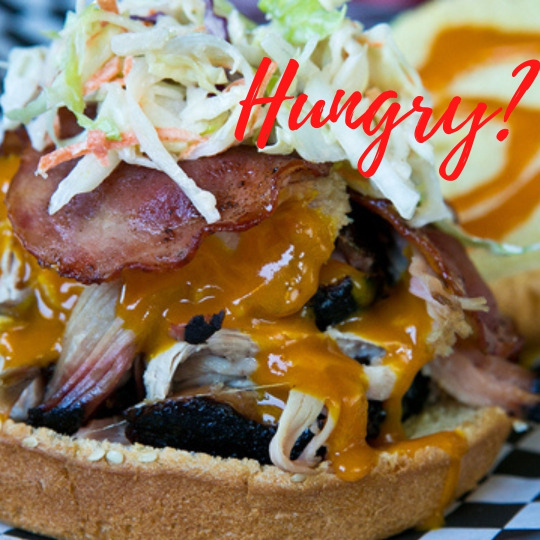

Texas Smokehouse BBQ or Chicago-style deep dish pizza. We have what hungry folks need to fill up! Conveniently one block north of CA-92 at the El Camino Real exit in San Mateo.
650-578-1942
#san mateo pizza restaurant#san mateo pizza takeout#san mateo pizza delivery#texas bbq in san mateo#Texas smokehouse BBQ in the Bay Area#Chicago style pizza in the Bay Area#deep dish pizza in San Mateo
2 notes
·
View notes
Text
Writing Chicago
okay, so i saw this reference post a long time ago that was all about new york city to help people who write about it but don’t really know about it. and i haven’t seen one about chicago, my home city, so i thought i’d make one!!
you are allowed to like this, reblog this, etc. this is for everyone to use as a reference!! i might add more information if i missed something!! if you think something is wrong or should be changed, please let me know!! this is just some general knowledge you should have about chicago from a native that you can’t really get from wikipedia. i hope you find this useful!
Linguistics
No, we do not talk like Mike Ditka. At all.
Soda is called pop.
People say “you guys.” “Y’all” is used more in southern Illinois.
Chicagoland area = Chicago + the surrounding suburbs + Northwest Indiana
The Lake Effect: a term often used, especially on the weather report. This term describes the effects the lake, Lake Michigan, have on the weather. Basically, it keeps it cool during the summer and warmer during the winter. But it’s not like you notice it in the winter because temperatures easily remain under 20 degrees from November to April.
Chicagoans will always and forever call the Willis Tower the Sears Tower. If you hear somebody say that, they either work there or they’re not from around there. And if you say it to somebody from Chicago, you’re going to get a funny look.
“The Lake” = Lake Michigan. Referenced often.
While this may not come up in writing, we say caramel like “car-mel” not “car-a-mel.”
When people say “the city,” they mean Chicago. You often hear this in the suburbs.
CTA = Chicago Transit Authority. It is comprised of train lines and bus lines.
Transportation
Sometimes you might hear something called the “skyway.” It’s Interstate 90 and it connects Chicago to Indiana. What’s noticeable about it is that it’s this giant, tollway on a giant bridge over the Calumet River. And there’s a McDonald’s right smack dab in the middle of it.
O’Hare is one of the biggest airports in the country and pretty much the primary airport of Chicago. However, there is also Chicago Midway International Airport (just called Midway). O’Hare is in northwest Chicago and Midway is closer to the Loop and Chicago’s south side.
Chicago does not have a “subway system.” Like, trains that run underground. Instead, Chicago’s subway is above ground and goes above traffic. It’s called the “L” which is short for elevated. There are 8 lines, each one named by color (red, orange, yellow, green, blue, purple, brown, and pink). The Red Line is the longest one, going from north to south. And it is the only one that does actually go underground in downtown Chicago. Nobody uses the Yellow Line because it only goes from Northern Chicago to Skokie, one of the northwest suburbs of Chicago. People who use the Yellow Line are commuters between Chicago and Skokie. The only other Line that goes outside of Chicago is the Purple Line, which goes to Wilmett and Evanston, two suburbs literally right outside of Chicago.
The Loop is Chicago’s downtown. It’s called the loop because majority of the CTA lines have stations that circle around the downtown. So it’s called the loop because of it. People say “the Loop” when they’re talking about downtown or taking the CTA. Some lines of the CTA only circle the loop.
Metra vs. Amtrak. The Metra is a train that connects Chicago to the suburbs. The L is more like a subway that arrives at every station in ten-minute intervals. The Metra is more like a train with more scheduled times. The L takes you around Chicago. The Metra takes you out of it. The Amtrak takes you out of Chicago to the rest of the country. Some stops are in the suburbs. But if you’re taking the Amtrak to the suburbs, chances are, Chicago was not your starting point. You’d be coming from another city, such as Springfield, and stopping in Chicago before going out to the suburbs. The Metra is for commuters.There are two stations for the Metra and Amtrak, Union Station and Ogilvie Transportation Center (OTC), both located a block apart from each other, both in downtown.
You don’t drive in the city. It’s a nightmare. Road rage is everywhere. Most people take the L, the bus, cabs, or Uber. People only drive in the city if they’re coming from outside or going outside of the city.
Here is the CTA map just for shits and giggles.
Weather
It’s so unpredictable. It will be 50 degrees in the morning and snow by 3 pm.
Also, 50 degrees is considered warm in Chicago. People are wearing shorts even at 40 degrees tbh. Also, it is always colder in Chicago than in the suburbs. And the suburbs are colder than central Illinois. You can tell the difference when you are traveling.
Chicago is a very windy city. And there is a big difference in temperature with the wind chill.
Schools will not close, even if there is a foot of snow on the ground and/or it is below zero degrees.
Likewise, it can be extremely hot in Chicago. Like, summers are usually well over 80 degrees. There just is no in-between.
Natural disasters? Uncommon. There are occasional earthquakes that happen like once every other year and they’re usually so little that people just sleep right through them. Tornadoes are the most common, but even those are infrequent and only really occur in rural Illinois.
Attractions
Some popular sites in Chicago, even for natives, are Navy Pier, Millennium Park, Shedd Aquarium, Adler Planetarium, Brookfield Zoo, Sears Tower, Museum of Science and Industry, Field Museum, The Art Institute, Lake Michigan, the Chicago River, and Wrigley Field.
Millennium Park is extremely popular. It’s located inside the loop and every year, there’s a special Christmas tree lighting. People ice skate there all the time in the winter and there’s the Bean. The Bean is officially called the “Cloud Gate” but everybody calls it “the Bean.” It’s this giant, stainless steel sculpture that’s like looking into a mirror. This is prime selfie spot here.
The Field Museum is home of Sue, the most complete T-Rex skeleton in the world. She’s pretty cool. People love swimming in Lake Michigan or going to the beaches, even if it is 50 degrees out. The Polar Plunge is popular. Wrigley Field is kind of a major attraction because of the Cubs but also because it is the second oldest baseball park in America. Except for the giant screens and a brand new bullpen, the field pretty much is the same as when it opened in 1912. You can go to the top of the Sears Tower, to the 110th floor, and go on the “Sky Deck.” There are glass boxes attached to the outside of the building where you can walk on and view the city. It’s the best view in the whole city.
You can also get the world’s largest ice cream sundae at Margie’s Candies, or so they say. I’ve had it, it is absolutely enormous, and it tastes incredible.
Lollapalooza. This is the biggest event in Chicago every single year. It is this giant music festival. It is filled with young adults, drugs, cops, and booze. It’s the Coachella of Chicago. Tickets sell out within hours of going on sale. When I was in high school, people honestly skipped school so they can stay home and buy their Lolla tickets. People do not fuck around when it comes to this.
Population
Very Polish. You see it in the street names.
Very democratic. Illinois is a democratic state because of Chicago’s population. Rural Illinois is way more Republican.
The main ethnic groups of Chicago are Irish, German, Latinx (especially Mexican), Assyrian, Arab, Jewish, English, Black, Korean, Chinese, Filipino, Puerto Rican, Indian, Italian, Cuban, and Polish. The suburbs tend to have a higher population of white people with low populations of people of color.
Sports
It’s a major thing in Chicago. Home of the Bulls (basketball), Bears (football), Blackhawks (hockey), Cubs (baseball), and White Sox (baseball).
The Bulls and the Blackhawks are Chicago’s most successful teams and the most popular.
Everyone is a Bears fan and everyone hates the Bears. They have been extremely unsuccessful the past like 7 seasons. People care a lot about the Bears. Most Bears fans really hate the Green Bay Packers.
The north side of Chicago belongs to the Cubs. The south side belongs to the White Sox. The city is very divided on this one and fans of either team don’t really get along with fans from the other team. However, everyone can agree that the Cubs winning the World Series was amazing. The Cubs have an intense rivalry with the St. Louis Cardinals, and the fans hate the Cardinals like the Bears hate the Packers.
Food
So you’ll mostly find your average food chains around Chicago. McDonald’s, Starbucks, etc. However, Chicago is also known for its Chicago-style hot dogs, Maxwell Street Polishes, and the deep dish pizza. Chicagoans will always tell you that their pizza is better than New York’s.
However, the most popular food chains are local ones: Portillo’s, Giordano’s, Oberweis, Steak ‘n Shake. Portillo’s is famous for their beef (hot dogs, Italian beef, burgers) and their chocolate cake shakes. Portillo’s is Chicago’s In-N-Out Burger. If you are looking for the most Chicago pizza ever, Giordano’s is the place to go. Oberweis sells ice cream, milkshakes, and milk. And Steak ‘n Shake is crazy popular because of their steakburgers, shakes, and for their ridiculously low prices.
Other Notes
Illinois south of Bloomington is like a whole different state. Northern Illinois is dominated by Chicago. Outside of the Chicagoland area, it’s more rural--save for smaller cities like Freeport, Rockford, Springfield, Bloomington, Peoria, Urbana-Champaign--and extremely different. People even talk differently in some places!
The Chicago River is dyed green every St. Patrick’s Day. Like, it is legit green. St. Patrick’s Day is one of the biggest celebrations in Chicago, even if you aren’t Irish. There’s the huge parade and people just like to see a bright green river. People get so lit for this.
Ferris Bueller’s Day off was known as “John Hughes’ love letter to Chicago.” Regardless of your opinions on the plot, characters, actors, director, etc., this film really is all about Chicago and will give you great insight on what it’s like.
Ever since, like 2014-2015ish, Chicago has banned plastic bags. So if you go to the grocery store, chances are, you’ll be charged to use plastic bags or you wil have to bring your own or you will use paper. Depends on the store, really. Here’s a useful wesbite on the ban that tells you what you need to know.
If you have any questions, comments, concerns, feel free to ask me!! Happy writing!!!
#long post for ts#long post tw#reference post#chicago#writing help#[ idk what else to tag this as oops#PLEASE REBLOG THIS#USE THIS ]#OUTOFWATER.#REFERENCE.
1K notes
·
View notes
Text
California Highway 1 Road Trip
Six weeks ago, Highway 1 fully reopened in Big Sur, following devastating mudslides in May 2017. After $54 million worth of repairs and the removal of millions of tons of earth, rocks, and debris, travelers can once again enjoy an uninterrupted drive along the gorgeous coastal highway between San Francisco and Los Angeles.
But it’s not just the views that make the trek one of the most famous road trips in the world. There’s also the food to contend with: Dotted along the winding route, you’ll find peppery smoked-fish tacos, juicy burgers smothered in eggs and melted cheese, and homemade doughnuts oozing with jelly.
Our version of this journey begins in Point Reyes Station, north of San Francisco. There, you’ll want to stock up on triple cream Mt Tam cheese from Cowgirl Creamery and scarf as many straight-from-the-bay oysters as you can get down. Your eating adventure will continue from there—you’d better start hungry.
Point Reyes
Side Street Kitchen
The specialty at this year-old, bright, modern diner is the crispy skinned rotisserie chicken, fragrant with herbs and served half or whole with an array of sauces, including curried yogurt, salsa verde, and chimichurri rojo. The other specialty: puffy, sugar-coated, fruit-filled apple fritters. 60 4th St., Point Reyes Station
The Boat Oyster Bar
Hog Island Oyster Co. is famed for the oysters it pulls out of the bay and supplies to top dining rooms around the country. A reservation-only café on the water features those world-class bivalves; the menu changes often, but it frequently includes Hog Island’s singular kumamotos. You can get a dozen raw for $36; even better are the barbecued ones, grilled and dripping with chipotle bourbon garlic butter. 20215 Shoreline Highway, Marshall
Half Moon Bay Area
La Costanera
Peruvian food is having a moment in the U.S., and La Costanera, with its wall of windows overlooking the water from a second-floor dining room, has been recognized by Michelin’s Bib Gourmand. The menu has a mix of classics such as antichuchos (grilled skewers) with marinated beef heart and pork belly; empanadas; tender beer-braised lamb shank; and lomo saltado (beef tenderloin with onions, soy sauce, and a fried egg, if you want one). 8150 Cabrillo Highway, Montara
Dad’s Luncheonette
Chef Scott Clark used to cook at San Francisco’s Michelin-three-starred Saison. He’s transformed a red-painted train caboose into a cozy, wood-lined diner with a small menu of comfort food favorites. The $12 hamburger sandwich has melted cheese, a soft egg, and red onion pickles on grilled white bread; the mushroom version substitutes maitakes for the grass-fed beef. 225 Cabrillo Highway South, Half Moon Bay
Sam’s Chowder House
Seafood makes up almost the entire menu at Sam’s, including a “Captains Platter” of oysters, clams, shrimp, poke, and ceviche; an appetizer of grilled sardines; steamed clams (with the option of linguine); and lobster rolls, “naked” with butter or “dressed” with aioli. At night, the place highlights fresh catches such as Pacific swordfish and local halibut. The seats on the deck offer a panoramic ocean view. 4210 Cabrillo Highway, Half Moon Bay
Hop Dogma Brewing Co.
The rotating array of craft brews at this locally popular beer hall might include Pyro’s Prost chili beer (pilsner brewed with jalapeño); Every Third Inquiry, a Bourbon barrel-aged stout; and the flagship Alpha Dank IPA. Guests can order food from nearby Lamas, a Peruvian and Mexican restaurant, and the tacos, burritos, and arroz con pollo will be delivered to the taproom. 270 Capistrano Rd., Half Moon Bay
Duarte’s Tavern
Dating back to 1894, when Frank Duarte bought the place for $12 in gold, this venerable restaurant specializes in a California version of Continental cuisine. The menu runs the gamut from shrimp cocktail to pork chops with fresh applesauce. The specialties are anything with artichokes, plus the cioppino, packed with clams, shrimp, cod and especially crab, which people drive down from San Francisco to eat. 202 Stage Rd.
Santa Cruz
The Picnic Basket
Set on the Santa Cruz Beach Boardwalk, the picturesque luncheonette has an all-day menu with a powerful breakfast selection: golden-brown turnovers stuffed with seasonal fruit or Niman Ranch ham and cheese; an egg-potato-greens frittata sandwich on toast; and house-made jelly doughnuts. Later in the day, hot dogs and elbow macaroni and cheese turn up on the menu. The nearby Penny Ice Creamery, where everything is house-made under the same ownership, is equally popular. 125 Beach St.
Monterey Peninsula
The Meatery
A serious, whole-animal butcher shop with impressive cuts of meat on display, this white-tiled space also serves as a deli. Sandwiches range from a hefty Reuben to banh mi made with caramelized pork belly slices, pickled vegetables, a hit of cilantro, and kewpie mayo on a French roll. A highlight is the house corned beef with sauerkraut on rye. The hot food offerings change daily: On Sundays and Mondays, there’s buttermilk-fried chicken; on Thursdays, visitors line up for the baby back ribs. 1534 Fremont Blvd., Seaside
The Bench Restaurant
Set on the impossibly scenic Pebble Beach Golf Links 18th hole, the Bench has a crowd-pleasing menu that offers all kinds of pizza-styled flatbreads: with pepperoni; with ratatouille, fennel ricotta and heirloom tomatoes; and with bench bacon and grilled, pickled red onion. The 24-ounce short rib, the Smokey Joe, is smoked for 10 hours. Aside from the best views, the outdoor deck has fire-pit tables. 1700 17 Mile Dr., Pebble Beach
Aubergine at l’Auberge Carmel
Chef Justin Cogley operates one of the country’s best under-the-radar fine-dining restaurants. Set in a Relais & Châteaux property, the intimate dining room has a $175 tasting menu that combines local ingredients in unexpected ways: A Morro Bay oyster with caviar has a hit of sea water, and seared abalone is accompanied by romaine lettuce that’s been braised and sliced in thick rounds, with lobster-infused lettuce puree. Monte Verde at 7th Ave., Carmel
Big Sur
Big Sur Bakery & Restaurant
Amid the trees in the hills off the highway, this exceptional café produces terrific pizzas from the wood oven, with a charred, bready, chewy crust and such toppings as creamy greens, mushrooms and tangy taleggio, and red sauce meatballs. The place is first and foremost a bakery: The creamy lemon curd pie in a pistachio crust is addictive, as is any pastry in the display case. 47540 Highway 1
Sierra Mar at Post Ranch Inn
Post Ranch Inn, renowned for its modernist, cliffside, treehouse rooms overlooking the ocean, has a new manager, Gary Obligacion, formerly of Chicago’s celebrated Alinea. The property’s Sierra Mar restaurant is home to one country’s largest wine collections, with 14,000-plus bottles. It complements an elegant four-course tasting menu from which the seared foie gras has a garnish of hazelnuts and king salmon is paired with smoked split peas and sweet apple. 47900 Highway 1
The Sur House at Ventana Big Sur
In 2017, Ventana went through a multimillion-dollar renovation. The renovated Sur House restaurant now has outdoor fireside seating and a bar menu with smoky spice-rubbed chicken wings and open-faced tuna melt accented with pickled fennel. The dinner menu has deceptively simple dishes, such as grilled pork loin on a bed of jalapeño-spiked grits. The wine cellar is also notable: some 10,000 bottles with a focus on the Central Coast. 48123 Highway 1
San Luis Obispo
Ruddell’s Smokehouse
There’s not much barbecue along Highway 1. The notable exception is Ruddell’s, where founder Jim Ruddell set up shop in 2001 in a small building with a few tables outside. The place smokes albacore and salmon with a brown sugar and kosher salt rub; chicken is slow-cooked over hickory. The smoked seafood and poultry are available as tacos in a big French-roll sandwich or salad—and by the pound. 101 D St., Cayucas
Cracked Crab
In the surfing town of Pismo Beach, the unpretentious Cracked Crab has a blazing neon sign and lines stretching out the door. The menu changes according to availability of seafood and features an ocean’s worth of crab: dungeness cocktail with lime and avocado; puck-size, pan-seared lump blue crab cakes; and New England-style lobster rolls stuffed with crab instead. The seafood buckets offer the opportunity to mix and match wild Gulf shrimp, Alaskan crab, clams, mussels, and lobster tails; they go for $61 for one person and $79 for two and come with all the mallets and scissors you’ll need to extract the shellfish. 751 Price St., Pismo Beach
Santa Barbara
Jalama Beach Store & Grill
In Lompoc, the epicenter of Santa Barbara winemaking, is this grill, set inside a store that’s set inside the county park. The specialty is the Jalama burger: It’s quintessential Cali-style, with shredded lettuce, tomato, onions, special sauce, and a griddled bun. The burger has gotten so popular over its almost 40-year history that the name is trademarked. 9991 Jalama Rd., Lompoc
La Super-Rica Tacqueria
Famous for being name-checked by Julia Child, Super-Rica is a cheerful, white-and-turquoise stand with a large selection of options that feature stellar homemade tortillas. The tacos are filled with all kinds of grilled meats—chunks of spiced, brick-colored chorizo; adobado with tender strips of marinated pork. The Super-Rica Especial is made up cheese-stuffed green pasilla chiles that are roasted and draped over tortillas with marinated pork and more cheese, for $6. 622 N. Milpas St., Santa Barbara
Santa Barbara Shellfish Co.
At the end of a dock on the harbor, this photogenic counter started out selling local seafood almost 30 years ago. Customers can still buy fish from commercial fishermen here. (There’s also a robust online store with trays of uni and stone crab claws.) The chopped caesar comes with a choice of grilled, skewered shrimp or sweet scallops. There’s more local shrimp, coated with coconut and crispy fried, garnished with onion rings. Also highly recommended are the linguine studded with garlic-sauteed clams in the shell and the monumental, steamed two-pound crab, along with a selection of local wine and beer by the pitcher. 230 Stearns Wharf, Santa Barbara
The Los Angeles Area
Malibu Farm
What started as a pop-up dining room by Helene Henderson in 2013 is now a farmers market-driven restaurant and café on the Malibu Pier, with outposts in Miami and Hawaii. The all-day café at the end of the dock has a lightbulb-lit menu that boasts a pile-up of Swedish pancakes with whipped cream and whatever the seasonal berries are, as well as kale caesar and BLTs with lemon aioli brushed on whole wheat. Down the pier, a slightly more serious version of the restaurant offers a tofu, spinach, and tomato scramble on weekend mornings, and nachos, featuring blue corn chips laden with black beans, melty cheese, and drizzles of sour cream in the evenings. 23000 Pacific Coast Highway, Malibu
Tallula’s
Chef Jeremy Fox, who heads up the nearby vegetable-focused Rustic Canyon, now puts a creative spin on the Mexi-Cali dining room. In a colorful space decorated with hanging plants, Fox uses exceptional local corn, served Mexican-style with smoky chipotle aioli, and accents black-cod tacos with malt tartar sauce in tender, house-made tortillas. A daily taco special is dreamed up by rotating cooks in the kitchen. The serious bar program features mezcal Manhattans on draft, as well as the obligatory margaritas. 118 Entrada Dr., Santa Monica
Father’s Office
Chef Sang Yoon began serving one of the—if not the—country’s first gourmet burgers almost 20 years ago. The Office Burger is made from freshly ground, dry-aged beef, so it’s got a deep, meaty flavor that’s further accentuated by sweet caramelized onions, bacon, gruyere, and blue cheese. Accompanying fries, standard or sweet potato, are presented in a mini-shopping cart. Father’s Office is equally known for pouring dozens of local craft beers. 1018 Montana Ave., Santa Monica
The post California Highway 1 Road Trip appeared first on Bloomberg Businessweek Middle East.
from WordPress https://ift.tt/2NIzkl2 via IFTTT
5 notes
·
View notes
Link
You’ve Heard of Ghost Kitchens. Meet the Ghost Franchises. A video from MrBeast, a 22-year-old YouTube star with 54 million subscribers, usually goes something like this: An outlandish setup — say, staging a fake robbery — results in a fan’s winning thousands of dollars or a new car. But in late December, MrBeast (real name: Jimmy Donaldson, an upbeat bro from North Carolina) dropped something different on his viewers. “I literally just opened 300 restaurants all across America,” he said in a December video announcing MrBeast Burger, a chain serving smash burgers and fries. “But we only serve people through delivery apps.” But MrBeast Burger is not quite what most of us think of as a chain, or even a restaurant. In exchange for a cut of sales revenue, the brand supplies the name, logo, menu, recipes and publicity images to any restaurant owner with the space and staff to make burgers as a side hustle. When a customer orders from the MrBeast Burger in Midvale, Utah, the food is prepared at a location of the red-sauce chain Buca di Beppo, following a standardized MrBeast recipe. In Manhattan, a MrBeast Burger is prepared at the neighborhood bar Handcraft Kitchen & Cocktails. Call it a ghost franchise — and expect to see many more of them this year, with and without celebrity names attached. In December, Virtual Dining Concepts, the company behind MrBeast Burger, announced similar ventures with the TV personality Mario Lopez and the “Jersey Shore” alumnus Pauly D. The parent company of Nextbite, another pioneer of the model, received $120 million in venture-capital funding in October for its 13 virtual brands. Franklin Junction, founded last year, helps restaurants do business as known food brands, including Wow Bao and Nathan’s Famous. Companies like Future Foods, Combo Kitchen and the Local Culinary are all making similar plays. In the delivery app era, the ghost franchise can be a lifeline for the independent restaurateur, a way to make thousands of dollars a month in a devastating time. It can also be a liability, exploding the marketplace in ways that serve big brands more than small businesses. James Garofalo, 52, grew up working at his father’s diner in Chicago Heights, Ill. Now, he’s the chief operating officer at Goddess and the Baker, a cafe with several locations in Chicago and one in Brookfield, Wis. At first, Mr. Garofalo was skeptical of the ghost-franchise model. But as the pandemic cut off foot traffic, he decided it might make sense. “At this point, you’re looking for ways to generate dollars, keep staff on,” he added. Mr. Garofalo now runs 12 of Nextbite’s ghost franchises out of the kitchen of his Brookfield cafe: Monster Mac, the Big Melt, Grilled Cheese Society, Miss Mazy’s Amazin’ Chicken, Toss It Up, CraveBurger, Outlaw Burger, Ghost Grille, Firebelly Wings, Wild Wild Wings, the Wing Dynasty and HotBox by Wiz, from rapper Wiz Khalifa. The day-to-day is less chaotic than it sounds. Delivery-app orders stream into one tablet, and the takeout containers all come from the same pile; nothing is branded except HotBox orders, and those have just a sticker. Recipes from Nextbite’s Colorado test kitchen are easy to follow, and the company recommends ingredients from the suppliers Mr. Garofalo already uses. Nextbite takes a 45 percent cut of sales, but handles all delivery-app fees, which would be, for Mr. Garofalo, as high as 30 percent per order. In his best month so far, he cleared $20,000 across the 12 brands. The arrangement has allowed Mr. Garofalo to add new types of food without the labor of menu development or the worry of muddying his own brand. But what restaurant owners are really buying from these companies is not just recipes or a cutesy name. They’re buying a solution to a problem facing every small restaurant that’s living as a name on a screen among all the other names on a screen: visibility. “Before Covid, you had some restaurants that did not need to be on these third-party systems,” said Kymme Williams-Davis, the owner of Bushwick Grind, a cafe in Brooklyn. “But now every restaurant, every cafe, every commercial kitchen and every ghost kitchen is on these apps. It’s more competitive.” If someone on her block searches Grubhub for espresso, Bushwick Grind is buried below more than 20 shops, some of them miles away. The business model hinges on deals the ghost-franchise parent companies strike with third-party delivery apps (which are notorious for taking advantage of workers and restaurants), using the leverage of having hundreds of listable “restaurants” to broker top spots for them in search results. If a customer in the Brookfield area searches for grilled cheese on DoorDash, Grilled Cheese Society comes up as the first suggestion. In a search for wings, Firebelly is third and Wild Wild Wings is fourth. “Like anyone else, we pay to be on apps and we pay for placement,” said Geoff Madding, Nextbite’s chief executive. He added, “The more value you’re bringing, probably the stronger negotiating position you’re in.” In January, Ms. Williams-Davis started selling online as Mariah’s Cookies, the Virtual Dining Concepts brand partnership with the singer Mariah Carey, as a test run to see if the extra sales could help Bushwick Grind “stay alive during this really unprecedented time,” she said. She had to close for six months last year, she said, after her father and several of his cousins died from Covid-19. Her cafe is an exemplar of a community-minded business; she runs a community refrigerator, feeds vaccine workers and has plans to open an urban farm. “I don’t want to contribute to not buying local, right?” she said. “In one way, if you’re buying from Mariah’s Cookies, and that name and that advertising machine can get customers, you kind of are buying local because I’m making the cookies. But at the same time, the perception is that you’re not buying local. I’m on the fence. But if it nets out to hurt small businesses, it’s not something I’m going to continue to do.” Nationwide, more than 150 MrBeast Burgers are operating out of locations of Buca di Beppo, Bravo! Italian Kitchen, Brio Italian Grille and Bertucci’s Brick Oven Pizza & Pasta. Those four restaurant chains are owned and operated by Robert Earl, the founder of Planet Hollywood; Virtual Dining Concepts, which operates MrBeast Burger, was co-founded by Mr. Earl and his son, Robbie Earl. Similarly, many of Franklin Junction’s ghost franchises are operated out of a Ruby Tuesday or a Frisch’s Big Boy, chains owned by Franklin Junction’s parent company NRD Capital, a private equity firm. But even an independent restaurant can get a virtual brand up and running in less than 30 days, with few limits to the number of brands one owner can take on. And that potential speed of proliferation could result in a delivery-app ecosystem where the ghost-franchise parent companies duke it out at the top, while the truly independent restaurants are pushed farther down the list. In New York City, this is already happening. If you’ve noticed the torrent of perplexing restaurant names on delivery apps, many of them confusingly similar, this too is a manifestation of the ghost franchise. When Jacky Cheng, a resident of the Kips Bay neighborhood of Manhattan, ordered from Village Breakfast Snob on DoorDash, “it didn’t really cross my mind that it was a ghost kitchen,” he said. “Although it should have, because who the heck names their restaurant that?” The food, he later found out, came from a bodega in the East Village that is operating as at least 10 ghost brands, including LA Breakfast Club and American Cheesesteaks. New York is now home to the Pancake Snob, Breakfast Burrito Snob, Sushi Snob, Pad Thai Snob, Chicken Tikka Snob and Snobby Chicken Wings. There’s also the Burger Bae and Breakfast Be Loved. The style of these names creates a marketplace that parallels Amazon in some ways, said Lea Chu, a group director of naming at the brand strategy firm Siegel & Gale. You have a need — there, a hole puncher; here, a breakfast burrito — and a hyper-specific listing is there to fill it. Seven years ago, Ms. Chu surveyed the name of every restaurant in Manhattan, a project that took weeks. Restaurant owners usually want names that won’t sound silly in a year, she said. Here, that matters less. “What’s the worst that could happen?” Ms. Chu said. “Your name becomes irrelevant and you have to change it? It probably doesn’t matter. There’s so much fluctuation in this restaurant landscape that everyone’s going to be used to names changing all the time.” For now, we seem to be entering a period in which every “Bachelorette” contestant from the last 18 years will have a virtual deli. Mario’s Tortas Lopez and Pauly D’s Italian Subs are listed in dozens of markets. Since January, at least 130 outlets of Guy Fieri’s first virtual brand, Flavortown Kitchen, have opened. And MrBeast Burger has already spread to Canada. A following of 54 million YouTube subscribers sells a lot of sandwiches — more than a million in the first two months, in fact. “My son is 18, my daughter is 14, and they think MrBeast is hilarious,” said Cece Kaufman, an interior designer in San Francisco. In December, the family went on what Ms. Kaufman cheerfully called a “road trip” — a 40-minute drive into the delivery zone of the closest MrBeast Burger, to meet a DoorDash driver carrying three smash burgers and two orders of fries. The teenagers, like most ghost kitchen customers, had no idea where the food was made. “They didn’t care,” Ms. Kaufman said. “The wrapper had the MrBeast stickers on it, so they thought it was great.” Source link Orbem News #Franchises #Ghost #heard #Kitchens #Meet #youve
0 notes
Text
The Best NFL Tailgating Cities

View photos Fans of the Denver Broncos play beer pong as they tailgate in the parking lot outside Mile High Stadium. (Photo by Dustin Bradford/Getty Images. Design by Erik Mace for Yahoo Travel) Football season is now in full swing, but all the fun doesn’t have to happen on the field. In fact, the real game might be taking place just outside the stadium gates. As you fire up the grill, polish the RV, and head to the store for some extra beers, consider checking out one of these tailgates — the most searched NFL tailgates on Yahoo. 10. Denver Broncos: Miles High of Fun

Tailgaters outside of Invesco Field at Mile High prior to a Denver Broncos game. (Photo: Dilip Vishwanat/Getty Images) The Mile High Stadium doesn’t just permit tailgating, it encourages it. Tailgating is allowed in all parking lots, but spaces in the coveted Lot C and Lot M are $30 per spot and doled out on a first-come, first-served basis. (Plan on getting there by 8 a.m. for afternoon games.) The Mountain High Village, at gate 4, is also open to all fans with a game ticket and has flat-screen TVs, food and drink, DJs, and cheerleader appearances. While Broncos fans are known for being some of the nicest in the NFL, if someone offers you a taste of their Rocky Mountain Oysters, you might want to politely turn them down. The delicacy is essentially deep-fried bull, pig, or sheep testicles. 9. Pittsburgh Steelers: Terrible Towels For Everyone
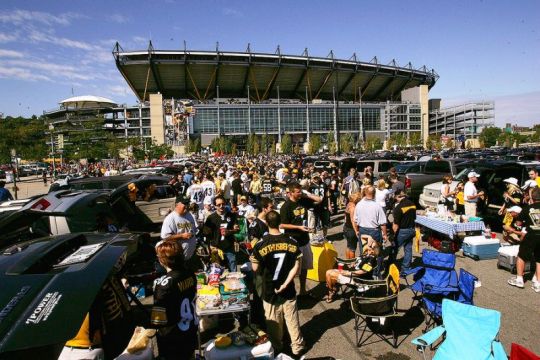
Steelers fans tailgate before a game at Heinz Field. (Photo: Ronald Martinez/Getty Images) If you can’t find the famous Mobile Tailgating Unit — a repurposed Steelers-yellow ambulance (with a bathroom on board!) — then you’ll just have to settle for the rest of the fun around Heinz Field. There are over 20 parking lots, all of which open five hours before kick-off. While many of the closest spaces have been pre-sold to longtime fans, if you get there very early you might still be able to find a spot. Stage AE is the official Steelers Tailgate Zone, but you can find Polish-inspired food and great cooks everywhere. Check out Blue Lots 7F and 7H for some of the best snacks. Just be sure to bring your Terrible Towel and your dancing shoes for the Steelers Polka. 8. Chicago Bears: Plenty of Hours to Fight the Chill
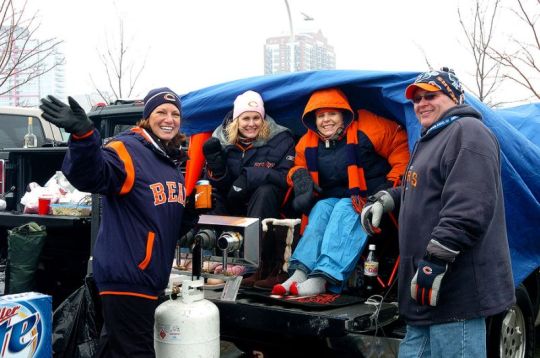
Bears fans tailgate at Soldier Field in Chicago. (Photo: Al Messerschmidt/Getty Images) While you can’t tailgate during the game — maybe you should actually watch some football after all — you can tailgate at Soldier Field for four hours before and two hours after. That’s a lot of time in what can be unforgiving weather, which is why Bears veterans wear layers and prepare for anything. Tailgating is allowed in all surface lots and on the top of Waldron Deck, but you need pre-purchased parking passes. If you don’t have a pass, just bring enough food and beer to share and you’ll find plenty of people willing to let you sit around their grill. Some lots are designated as family-friendly, while others can get particularly rowdy. Just be sure not to miss Fiesta Bob’s pregame speech, which he’s been doing for over 20 years — typically around 10:30 a.m. for a noon game. 7. Green Bay Packers: Getting Back to Your Roots

Fans crowd the tailgating area at Lambeau Field. (Photo: Kena Krutsinger/Getty Images) There is some evidence, according to the Packers’ organization, that tailgating was in fact invented by the Green Bay fans in the 1920s as fans gathered around fires to stay warm before games. Sure, the official tailgating zone is called The Tundra — as in a frozen tundra. But you’ll get warm enough once you try all the cheese curds, brats, and beer. The Lambeau Field parking lot opens four hours before game time and no oversized buses or RVs are allowed. It might be hard to find a space, though, since the majority of spots are sold to season parking pass holders, who aren’t giving those spots up anytime soon. You can reserve a spot in one of the other lots nearby. Or, to tailgate without a car, head to the Brett Favre Steakhouse, a few blocks from the stadium, or join the Bart Starr Plaza party. 6. Cleveland Browns: Beer Inside a Chicken? What’ll They Think of Next
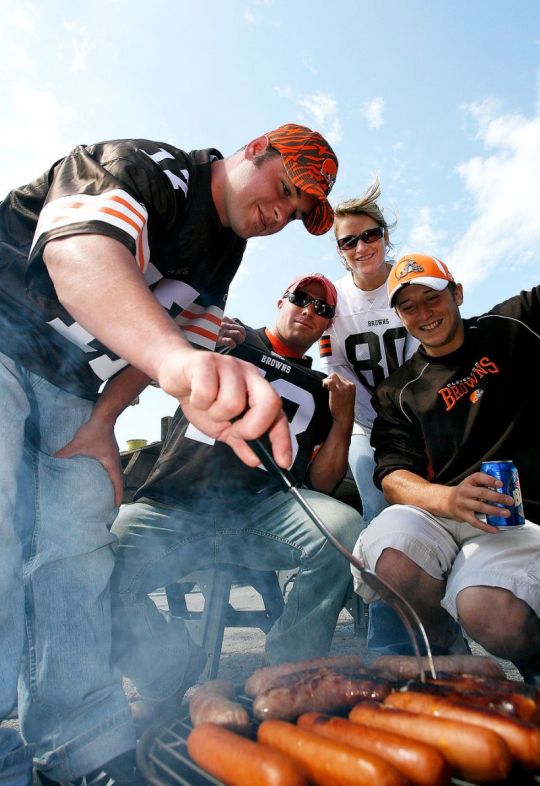
Fans tailgate before a game between the Dallas Cowboys and the Browns in Cleveland. (Photo by Kevin C. Cox/Getty Images) You know any tailgating community that creates the beer-can chicken — a chicken filled with beer and then grilled — is going to have some fun pre-game parties. Fans start gathering as early as 7 a.m., when the main Muni parking lot opens for most of the season’s games. The city recently released rules for this season, which includes no open fire, no alcohol, and no saving spaces, but that doesn’t mean no fun. As you’re enjoying your fried turkey and chili, keep your eyes peeled for the famous Cleveland Brown’s tailgating vehicles like The Kennel, an orange and brown school bus, or the Tailgate Dawg, a bus with a giant dog head on the front. Related: The 15 Best College Bars in America 5. Philadelphia Eagles: Where Tailgating is Serious Fun

Philadelphia Eagles fans tailgate at Lincoln Financial Field. (Photo: Mitchell Leff/Getty Images) Philadelphia takes its tailgating seriously — so seriously that The Football Shuttle, a repurposed school bus that lives in the Wells Fargo Center parking lot, has its own Facebook page. Tailgaters make official-looking t-shirts and give their groups names. Many have been grilling and playing Shotgun Shotgun, a kind of drinking relay, in the same spot for decades. Much of the best tailgating takes place in the lots around the Wells Fargo Center, across from Lincoln Field, where you can just show up in the morning and pay for your spot at the gate. Parking lots around the stadium open five hours before games, and tailgating is not permitted in Lots Q-W or the lot near the Nova Care Complex. Related: Game on: The Best College Football Towns in America 4. Houston Texans: Bigger and Better in Texas
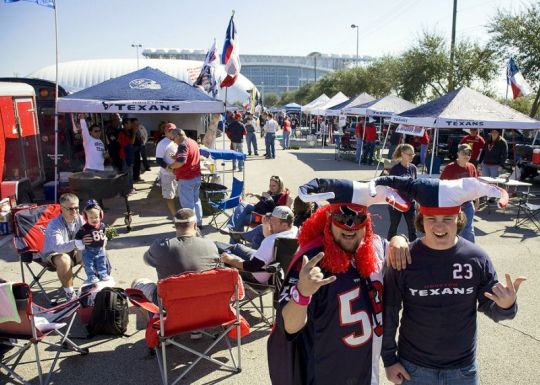
Costumed Houston Texans warm up for a game. (Photo: Richard Carson/Reuters/Corbis) Texas knows BBQ and Houston Texan tailgaters know a thing or two about making some of the best BBQ you’ll find in any NFL stadium. No tailgate at NRG Stadium would be complete without trying some brisket, ribs, or sausage from one of the local pitmasters. To do so, you’ll either need a game ticket or a $10 tailgating guest ticket. A few years ago, tailgating at Texan games got so popular that team officials had to cut down on the crowds. Once you’re inside the parking lots, though, no one does it like the Texans do it. If you want to be named the Tailgater of the Game or of the Year, you’ll face some tough competition. Long-time groups like Texans Liberty Tailgaters and the Raging Bull Tailgaters spend over $10,000 each season to serve up Texan hospitality. 3. Kansas City Chiefs: Bring Bacon and BBQ
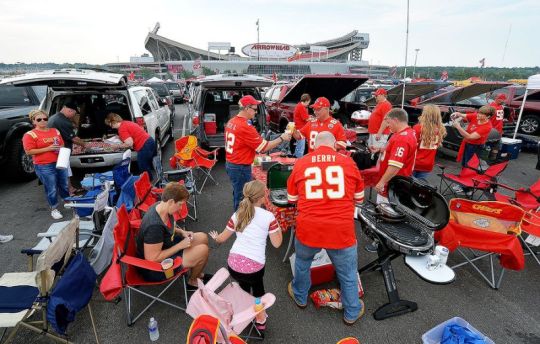
Kansas City Chiefs fans know their barbecue. (Photo: John Sleezer/Kansas City Star/MCT) Tailgating at Arrowhead Stadium is only a little bit about the football. Mostly it’s about the friends you make waiting in line at dawn, the fun of one truly massive party, and BBQ. Really, it’s a lot about the Kansas City-style BBQ. The parking lots, which the Chiefs share with the Royals, are so large that 25,000 cars can park and there’s still plenty of room for BBQ pits, Chiefs-themed postal vans, and almost any food you want wrapped in bacon. That means if you don’t have a group, you should be able to find one amid all the Kansas City friendliness. A tip: bring bacon — good, juicy bacon — and be ready to trade it. The gates open three-and-half hours prior to kick-off, but you’ll want to get there early and make friends in line. 2. Baltimore Ravens: Games, Crabcakes, and Football
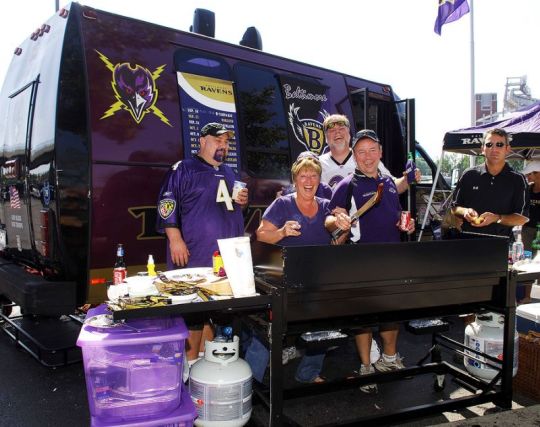
Baltimore Ravens fans barbecue in the parking lot of M&T Bank Stadium. (Photo: Kirby Lee/Getty Images) If you’re not sure how to tailgate at a Ravens game, don’t worry. The team has official tailgating tips and even games you could try playing to pass the time, like Cornhole, Ladder Ball, or a “Ray Lewis Entrance” dance-off. The lots around the stadium are typically sold out well in advance to season ticket holders (and serious tailgaters). If you’re looking for a party, try Lots H and G. If you’ve got kids, head to the Ravens Walk, by Lots B and C. That area typically has pre-game entertainment, DJs, and big screen TVs. If you don’t have a pre-purchased parking pass, then you can always park in the lot across the street behind the ABC Party Rental store. Whichever lot you pick, you’re bound to find beer, football fans, and crab cakes. That’s what Baltimore does best. 1. Buffalo Bills: Not Too Cold for the Real Fans

Bills fans cook from the top of a 1989 Ford Pinto. (Photo: AP Photo/Don Heupel) Sure, Bills fans know how to throw a traditional outdoor tailgate, no matter the weather. But they also have the largest indoor tailgating party in the league held at the ADPRO Sports Training Center. That area, with games, prizes, and entertainment, tends to be more family-friendly and kid-focused. If you’re looking for adult fun, you’re going to have to brave the cold. Plenty of long-time fans have been doing just that for years. Look for Ken “Pinto Ron” Johnson, who grills meat on the hood of his Pinto, makes pizza in an oven made of a filing cabinet, and cooks chicken wings in a mailbox. Of course, you’ll also have to take the traditional shots out of a bowling ball, and you won’t want to miss Buffalo wings in the home of Buffalo wings. source Read the full article
0 notes
Photo

Each weekend this Holiday Season Santa will be ready to take selfies with your kids. Afternoons from 1-4 pm. Bovet Square is one block north of CA-92 on El Camino Real.
https://windycitypizza.com
#Santa selfies in San Mateo#chicago-style deep dish pizza in San Mateo#Where to find deep dish pizza in the Bay Area#Windy City Pizza and BBQ in San Mateo
3 notes
·
View notes
Text
Once again I prepair a long rant of "what the fuck are you talking about" before what I'm reading clarifies that by "california" they mean "the bay area" cost of living's like 65% more there I think.
pizza here's normal. you can get fancy ass hoity toity north end of town new york pizza for like 10 bucks, including a drink and bread. can't find chicago style but my end of town got gentrified. plus you can get a carne asada pizza from the origins for like a buck more than that and ah so good CoL's like a few cents more where my gramma lives in norcal, but for scaling reasons. Relatively small town in the middle of rice paddies and corn that floods a lot. There's wild chickens, and a mountain for no reason. Nothing's really out there except farms and poverty. and like if you say norcal I think of that or i think of weed. which is pretty much a gas stop in the mountains.
pls stop generalizing sf as anything more than the bay area. it is an outlier
1 note
·
View note
Photo

RECIPE: West Virginia–Style Hot Dogs (from Endless Summer by Katie Lee)
It seems every area of the country has its own way of dressing hot dogs. I like New York–style with the sauerkraut and mustard just fine, and Chicago dogs are pretty good, too, but nothing beats a West Virginia dog. We make ours with chili sauce, yellow mustard, and coleslaw. The mayonnaise of the slaw next to the spice of the chili and the tang of the mustard is pure perfection. I like to make these on a day when we’re all hanging by the pool. I put the chili on the stove or in a slow cooker and just let everybody go in and serve themselves as they get hungry. It’s a paper plate and potato chip kind of day, totally easy, laid-back, and fun.
Serves 8-10
For the chili sauce:
2 pounds (910 g) lean ground beef
1 yellow onion, grated
1 (16-ounce/454-g) can tomato sauce
1 (12-ounce/340-g) can tomato paste
2 tablespoons chili powder
2 tablespoons sugar
1½ teaspoons salt
1 teaspoon freshly ground black pepper
1 teaspoon garlic salt
2 bay leaves
1 tablespoon white wine vinegar
For serving:
Good-quality hot dogs, grilled, steamed, or boiled
Hot dog buns
Yellow mustard
Coleslaw (your favorite recipe or store-bought)
Make the chili sauce: In a stockpot or Dutch oven, combine the beef (do not brown first), onion, tomato sauce, tomato paste, chili powder, sugar, salt, pepper, garlic salt, and 2 cups (480 ml) water. Stir until combined, then add the bay leaves. Cover and simmer over medium-low heat for about 2 hours.
Stir in the vinegar and simmer for 30 minutes longer.
Place your hot dogs on buns and top with chili sauce, yellow mustard, and coleslaw. This makes a good amount of chili, so plan on leftovers or freezing the leftovers if you don’t have a big group.

Katie Lee—co-host of Food Network’s The Kitchen—is known for her summer soirees, and in Endless Summer Cookbook, she shares more than 100 recipes that are staples at these parties. As Chef Bobby Flay can attest, “the recipes are as mouthwatering as they look.”
For Katie, cooking isn't just about the food. It’s about the whole experience: the atmosphere, the stories that each ingredient tells, and, of course, the people who share the meal. Katie’s vision of a complete entertaining experience continues with Endless Summer Cookbook—where the cooking reflects the distinctive flavors of her home in the Hamptons.
From photography to design to the recipes themselves, Endless Summer Cookbook evokes the delicious flavors of the best season of the cook’s year. Included are salad Niçoise, peach blueberry cobbler, figs wrapped in prosciutto, a pizza thrown onto the grill, steak tacos served with avocado and fresh cilantro, and much, much more. Katie also offers ideas for wine pairing and easy entertaining. Endless Summer Cookbook—with its stunning photography and fresh, easy recipes—brings to mind the ultimate summer fantasy of lazy, luxurious days at the beach.
For more information, click here.
#abramsbooks#abrams books#endless summer cookbook#endless summer#katie lee#the kitchen#food network's the kitchen#recipe friday
6 notes
·
View notes
Text
Staffing startups discover their fates connected to the businesses they serve
Wonolo co-founders Yong Kim and Jeremy Burton.
Wonolo.
This story is available exclusively on Organisation Insider Prime. Join BI Prime and start reading now.
Wonolo CEO Yong Kim said organisation initially fell throughout the pandemic, however an increase in need for vital organisations stabilized his business.
These business also have a hard time with a company model that needs sending out short-lived staffers from workplace to work environment while public health standards recommend lessening contact with large numbers of other individuals.
Check out Organisation Expert’s homepage for more stories
Apps that match temp workers with short-staffed businesses like restaurants, hotels, and warehouses comprised a burgeoning tech classification prior to the coronavirus break out began emerging in the United States. Now, the startups that produced those apps might be living or dying along with business they serve.
” Business has actually been tough,” stated Thor Wood, CEO of SnapShyft, which matches workers with open shifts at dining establishments and hotels in the Midwest.
Staffing startups serve a range of markets that count on temp workers to fill shifts when organisation spikes past regular capacity, or irreversible employees are out sick. Restaurants, hotels, and warehouses all utilize these platforms. Contract employees tap the staffing apps to pick up shifts washing meals, laundering clothing, moving cages, or performing a host of other tasks.
For staffing startups that assist services impacted by government closure orders to combat the pandemic, the decline in demand has been devastating.
” Company for us has actually dipped to the most affordable of the lows,” stated Tim Chatfield, CEO of Jitjatjo, a New York City-based start-up that services the city area’s vaunted dining scene.
” We were on a trajectory to quickly scale geographically,” Chatfield stated. “We have actually pulled that all back at the moment.”
Now Chatfield runs Jitjatjo via video talks from a “command center” in his house’s bedroom. His bed is concealed by a black drape, and a customized purple neon indication hangs over his head, reading “#hirehospitality.” He keeps a TV running close by so he can remain on top of the headings, as the future of his business rides on the current news updates about the spread of the infection and regional health regulations determining whether his staff members can work or not.
” We’re dealing with something that is actually, really tough in that the knowledge around it is developing on a hourly basis,” Chatfield said. “And we’ve got people spread out throughout multiple markets, each with different guidelines.”
” Believe about all the supply chain services that are in the supply chain, or logistics-related for consumers,” Kim said.
Business that dispatch short-lived staffers must grapple with the truth that their core company activity can run contrary to current public health assistance on slowing the spread of coronavirus.
Wood stated he frets that even after organisation closure orders lift, workers will hesitate to continue using the apps out of worry for their own security.
Here are a few of the leading startups in the staffing app market:
Pared
San Francisco-based Pared was launched in 2015 and now runs in cities on both coasts and the midwest. Unlike numerous other apps in the exact same category, Pared focuses solely on discovering shifts for food employees. Pared has actually been used by regional restaurants and big names like Pizza Hut and McDonalds.
Instawork
Instawork is frequently cast as a competitor to Pared. Both released in San Francisco in 2015 and now run in cities across the nation. Unlike Pared, Instawork helps employees find shifts in markets outside of food-related work, including warehouse gigs and shipment jobs.
SnapShyft
Indianapolis-based SnapShyft was established in 2016 and now provides shifts for food and event employees. The start-up opened a second office in San Francisco in 2015 to recruit leading skill.
Wonolo
The Bay Area’s Wonolo was established in 2013, an early entry in the category. Wonolo helps organisations find temp workers for a broad series of services, consisting of storage facility work, food production, cleaning, and administrative positions. Wonolo claims high-profile corporate customers like Coca-Cola, Papa Johns, and style seller Uniqlo.
Jitjatjo
New York City City-based Jitjatjo was established in 2016 and links workers to shifts at the city’s restaurants. Unlike lots of other start-ups in this category, Jitjatjo’s more than 10,000 employees are staff members of the business, not professionals. CEO Tim Chatfield said that business has actually been way down considering that the pandemic hit New York City. Jitjattjo has since rotated to using disinfection services.
Shiftgig
Chicago’s Shiftgig was founded in 2012 and very first focused on linking local companies to temp employees prior to changing into a SaaS service that assists staffing agency workers find gigs. Shiftgig is utilized by nationwide staffing firms consisting of LGC Hospitality and The Task Center.
Qwick
Qwick was founded in 2017 in Scottsdale, Arizona and has expanded to 8 significant cities throughout the country, including Phoenix, Dallas, San Diego, Atlanta, and New York City. Qwick is focused on finding shifts for food workers and event catering services.
Loading Something is loading.
More:
COVID-19 Startups Wonolo Instawork
Chevron icon It shows an expandable area or menu, or sometimes previous/ next navigation alternatives.
.
%%.
from Job Search Tips https://jobsearchtips.net/staffing-startups-discover-their-fates-connected-to-the-businesses-they-serve/
0 notes
Video
youtube
FEVER B (USA) will support MASKED INTRUDER (USA) & THE HAWAIIANS (D) on 20/07 at Molotow, Hamburg - presented by WILDWAX SHOWS!!!
https://www.facebook.com/events/1076872735831765/
Präsentiert von Ox, Livegigs.de, SLAM Magazine und Wild Wax Shows Straight outa Rikers. Straight outa Cook County, straight outa that prison in Louisiana that everyone says is horrible, but I can’t be bothered to Google, it’s MASKED INTRUDER, four melodious felons in ski masks with rap sheets, matching converse and some of the catchiest tunes this side of Johnny Cash, Live in Folsom Prison, and they’re coming at you with their second full length, the semi eponymously titled M.I., scheduled to break out on Fat Wreck Chords on May 27, 2014.! Some say they hail from Wisconsin, some say their accents on stage betray a New Jersey heritage and some people think they’re just Chixdiggit in disguise, but one thing’s for sure, Blue and the gang have been crafting some of the sweetest pop-punk gems about breaking and entering, stalking, and muggings that you’ve ever heard. Not many grown men in ski masks can claim to be the very favorite band of Fat Mike’s daughter, for example (not many men in ski masks should be around children at all) but that’s what makes Masked Intruder so special. They’re more than a gimmick. They’ve got chops. They’re weird, kinda arty, fairly goofy, vaguely dumb, relentlessly smart and they appeal to pretty much everyone, from their fellow hardened criminals to little girls and everyone in between.! Now, they’re back on the lam in support of M.I., featuring thirteen tracks of broken hearts, broken promises and breaking and entering. Recorded by Matt Alison at Atlas Studios in Chicago (Alkaline Trio, Lawrence Arms, Menzingers), M.I. boasts the Intruders at their toe tapping, jewelry stealing best. I mean, if there’s a better title for a love song than Don’t Run Away, I sure as hell haven’t heard it.! In support of M.I., and in order to stay a step ahead of their parole officers, the Intruder duders are hitting the road nonstop, traversing the globe, from Europe to Australia to the US of A, with bands like the Dwarves, Face To Face and more, bringing their heart-stealing songs to the people, all while merch dude, stage security and exquisitely mustached lawman Officer Bradford makes sure that hearts are the only things Masked Intruder steals. Officer Bradford may not wear a smile during a Masked Intruder show, but everyone else in the house sure is, and you can bet your ass that whether live or on record, the boys in Masked Intruder are sure to have you singing along and looking for your wallet. Oh, that prison in Louisiana is called Angola. Score one for memory. Take that, Google. The Hawaiians are back!!! Nach einem musikalischen Beitrag zur amerikanischen TV-Serie Hawaii Five-0 im Jahr 2017 sind die Westerkappelner Surf-Punks endlich mit der neuen Single "Four-Headed Shark Attack" (Kamikaze Records) am Start. Drei Akkorde, die primitiven Gitarren der Ramones und ganz viel 50's Rock n' Roll sind nach wie vor die Rezeptur des hawaiianischen Party Cocktails, der am 20. Juli auch im Vorprogramm von MASKED INTRUDER konsumiert werden darf. FEVER B (USA) Brian Hermosillo a.k.a. Fever B has been a part of the underground San Francisco music scene since the 90s. The world famous Purple Onion and Chameleon bar were his home away from home for awhile as a member first of the Retardos and then the Fevers. Since the Retardos were Superteem label mates with The Donnas who labeled themselves “Donna A.”, “Donna R.” etc... on their records he decided when the Fevers got their record deal with Tina Lucchesi’s Lipstick Records,as a tribute to old label mates,to label his band on the 45 sleeve in the same way and so he became “Fever B”. Brian moved to Minneapolis a few years later to escape the dot com invasion and save the Fevers who’s drummer had quit to move to Los Angeles by working with a drummer friend who lived in Minnesota. The Fevers recorded two Lps for the German label Alien Snatch there in MLPS with the new drummer and toured Europe. Brian came back to Europe with his Minnesota band Skipper(Chocolate Covered Records) playing mostly in Italy a few years after that version of the Fevers had also ended. Brian moved back to California and the Fevers soon returned to Europe with the original lineup(Fever G,Fever K,and Fever B)a few years after Skipper. He also flew to The Netherlands for an extended weekend to record a 45 as The Sweet Faces in Utrecht with local indie pop legend Michel Van Der Woude on drums sandwiched between those two Fevers tours somewhere. One weekend in Saint Paul,Mn. in between all this excitement, Brian got snowed in. A wall of snow blocked the doors and windows and trapped him in his apartment! Of course he could dig his way out or call somebody -but he didn’t. He had beer,cold pizza, drums and guitars, and an 8-track reel to reel set up in the living room so he decided to stay inside and make a one man band style recording. He recorded five songs. A Burger records tour featuring their own band Thee Makeout Party came through town soon after. They are long time friends of Brian’s and came to visit his apartment and see his home studio. He gave them a cassette of his recordings just for fun and never thinking it would be released. They listened on their way back to California and decided it should be released on vinyl. It was an honor since Burger had mostly done cassette only releases at the time . Some folks in Milwaukee who were fans of the Fevers began calling Brian “Fever B!” at some point -which was by now an obscure reference- when he came to their town and whenever they came to Minneapolis and the name stuck with him. So he decided to call his solo release on Burger Records “Fever B”. The record was more successful than Brian imagined it could be. 90s mainstream power pop star Matthew Sweet even recently covered the song This Sea Is My Life from the EP! Crazy. The original version of the Fevers still plays every now and then. Brian plays most regularly with Fever B and the Sea. A band he put together to play songs from the Burger 12” and other songs he has written over the years including lots of new ones he’s hoping to record with his band the Sea. They play around the Bay Area including a recent show at 924 Gilman Street in Berkeley. The Sea is Lyndsey Hawkinson(Hondettes/Sweet Haughts ) on drums ,and a life long friend Tim Tsuda(sometimes member of Colossal Yes) on bass. -John Denery of the Hi-Fives saw Fever B and The Sea at a club in San Francisco recently and said they sounded like the great garage pop side of K Records with a guitar hero twist!
0 notes
Text
5 Things We Loved About a $7.5M Florida Waterfront Compound—and 1 Quibble
realtor.com
Waterfront homes in Florida aren’t exactly special. There are loads and loads of them, but it’s hard to find a place with views and character.
However, the home named Kimoni in Bradenton is legit special. On the market for $7.5 million, it’s a showstopper.
Homeowners Justin and Kim Pavoni poured money and resources into their custom compound on Sarasota Bay. The international pilot and retired interior designer drew on their years of international travel to piece together a photo-worthy estate.
Pool
Nicole Slaughter Graham
Originally, the property held nothing but a nondescript one-story house with a few rooms. The view is what sold the couple.
“I look out at that water and I immediately feel at ease,” says Justin. “I have a high-stress job and just being here relieves some stress.”
The compound they’ve built is definitely worth an insider’s look, and that’s where I come in. I went to Bradenton and took a tour of Kimoni. Here’s what I loved—along with one quibble.
View from master bedroom
Nicole Slaughter Graham
1. The privacy
After jetting across the globe taking countless passengers to their intended destinations, Justin simply wanted to be able to relax in the privacy of his own home. Kim’s design delivered.
“I wanted it to be private without taking away from the view and the openness,” she explains.
Outdoor bathroom
Nicole Slaughter Graham
There are over 400 plants and trees on the property, most of which conceal the three buildings on the property from the neighbors and even from one another. Each guest cottage is surrounded by plants for privacy, but still feels like part of a unified theme.
All the cottages offer privacy without feeling completely cut off from the rest of the world. There are outdoor showers throughout the property. Each guesthouse has a bathroom with sink and shower, and the master suite is equipped with an outdoor shower as well. However, you won’t have to worry about the neighbors’ prying eyes.
Guest cottage bedroom
Nicole Slaughter Graham
There’s nothing worse than trekking through a pristine house sandy, salty, and sweaty from a day in the sun. Kimoni’s outdoor bathrooms are ideal for the locale.
2. The views
The home is all about a seamless transition between indoor and outdoor lifestyles. On the main floor of the main house, the walls of the living room open up to the balcony. Deciphering where the living room ends and the balcony begins is nearly impossible.
Even though the property is large (nearly an acre) and trees provide privacy from one structure to the next, the Pavonis strategically placed all foliage so nothing would obstruct the water views.
Deck looking into the living area and kitchen
Nicole Slaughter Graham
3. Functional design
Kim’s design skills were clear the second I stepped onto the property. Designers sometimes compromise style for function, but not at Kimoni. Kim took me through the building known as Owl’s Nest first.
“We call it that because while we were building it, a family of owls decided to make their home here,” she says.
The two-story guest cottage is smaller than the main house (of course), and Kim made use of every nook and cranny.
Guest cottage living space
Nicole Slaughter Graham
“We lived on a sailboat for a year while we were building,” she says. “I learned a lot about making the best use of small spaces.”
The function of the compound can be found everywhere— not just Owl’s Nest. The second guest cottage, the in-law suite, the main home, and even the outdoor space are all about function.
There are hidden storage areas and sliding barn-style doors to make more use of the space, and the second guesthouse even features a Murphy bed in the living area (but you’d never know it).
The Owl’s Nest, second floor
Nicole Slaughter Graham
4. The outdoor space
If you’re going to live in Florida, proper outdoor space is a must, and Kimoni delivers.
Traveler palms and tropical plants dot the back and front yards. In true Florida style, Kim had a putt-putt golf course put in, and there are several benches and trails throughout the yard so that guests can amble through and soak in the surroundings.
She also installed lights in every place imaginable, making it a great place to throw an outdoor party.
Deck
Nicole Slaughter Graham
The backyard? Absolute perfection.
I’m a Florida girl through and through—I love a pool. Kimoni doesn’t just have a lovable glistening pool; it also has deck space, a hammock overlooking the water, an outdoor kitchen, a dock, outdoor pizza oven, and other accoutrements.
5. The elegant-industrial combination
I’m a fan of minimalist, modern design in general. I love clean lines and open spaces.
Kim prefers to fuse elegance with industrial details, and it works. Take Owl’s Nest, for instance. The guest cottage is fashioned with sturdy, Brazilian ipe wood that’s been treated with a light finish. The furniture is clean and elegant, and on the second floor, a large window that faces the water is affixed with a garage door. That’s right, a glass and metal garage door. Best of all—the idea works.
The garage door is completely functional, swinging in an upward direction so that the large window can be fully open, allowing a cross breeze into the cozy space.
Dining area
Nicole Slaughter Graham
The same concept works well in the second guest cottage. Clean, minimalist furniture against white walls are juxtaposed against an exposed AC pipe and aluminum sliding closet doors.
These details echo throughout the main house as well. Chicago brick in the master bedroom meets sailing-inspired details.
It’s not a combination I’d have ever conjured up, but Kim makes it work.
Nicole Slaughter Graham tests out the hammock
Juliza Delgado
———
I loved my time at Kimoni, but no house is perfect. Here’s my sticking point…
So. Much. Wood.
Full disclosure—I went into this house thinking I’d completely hate the interior. The photos I saw showcased a cabinlike wood interior and I couldn’t figure out how that meshed with a waterfront property in Florida.
The home’s exterior is quintessentially Florida in style and structure, but I imagined walking into a jarring Sunshine State disconnect.
Kitchen
Nicole Slaughter Graham
I was half-right. The interior compiles a bit of international flair. Furniture and art from places like Thailand, Italy, and Hawaii are easy to spot throughout.
However, the Pavonis did bring a bit of a cabin vibe to Florida, which I personally don’t love.
The main house’s kitchen and living space fuse rustic style with an old-captain-seafaring aesthetic. There’s a lot of wood. I prefer a more industrial look, and the abundance of wood just isn’t for me.
Living room in main house
Nicole Slaughter Graham
The kitchen has an island bar with a natural-style countertop of maple wood. At the front of the bar is a Jack Daniels keg. The rest of the countertops are dark, Italian granite with exposed edges. A dark backsplash meets knotty, wood cabinets, and a glass rack hangs from the ceiling.
Pool with waterfront view
Nicole Slaughter Graham
This kitchen flows into a living room of complementary style, with dark, leather couches and a stone fireplace, all of which give off a more rustic feel, rather than a beachy vibe. Will it work for someone? Absolutely! It just isn’t for me.
Aside from my one (minor!) quibble, Kimoni is a gem worthy of a second look. Just set me up in the hammock and I’m good!
The post 5 Things We Loved About a $7.5M Florida Waterfront Compound—and 1 Quibble appeared first on Real Estate News & Insights | realtor.com®.
5 Things We Loved About a $7.5M Florida Waterfront Compound—and 1 Quibble
0 notes
Text
The Best NFL Tailgating Cities
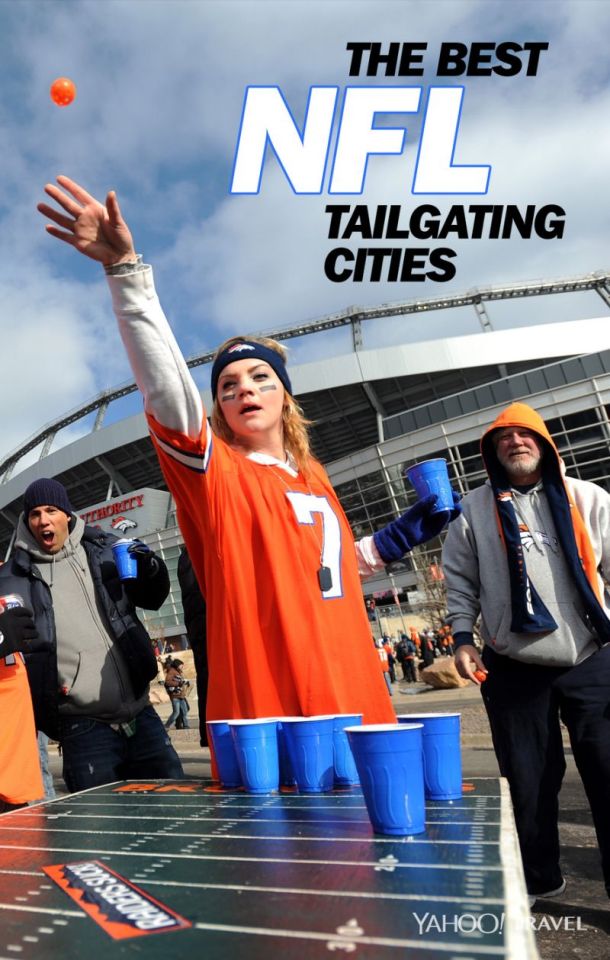
View photos Fans of the Denver Broncos play beer pong as they tailgate in the parking lot outside Mile High Stadium. (Photo by Dustin Bradford/Getty Images. Design by Erik Mace for Yahoo Travel) Football season is now in full swing, but all the fun doesn’t have to happen on the field. In fact, the real game might be taking place just outside the stadium gates. As you fire up the grill, polish the RV, and head to the store for some extra beers, consider checking out one of these tailgates — the most searched NFL tailgates on Yahoo. 10. Denver Broncos: Miles High of Fun
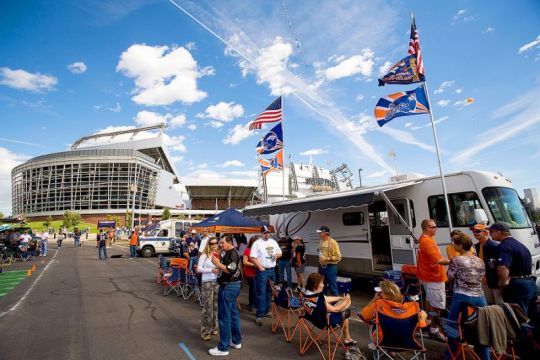
Tailgaters outside of Invesco Field at Mile High prior to a Denver Broncos game. (Photo: Dilip Vishwanat/Getty Images) The Mile High Stadium doesn’t just permit tailgating, it encourages it. Tailgating is allowed in all parking lots, but spaces in the coveted Lot C and Lot M are $30 per spot and doled out on a first-come, first-served basis. (Plan on getting there by 8 a.m. for afternoon games.) The Mountain High Village, at gate 4, is also open to all fans with a game ticket and has flat-screen TVs, food and drink, DJs, and cheerleader appearances. While Broncos fans are known for being some of the nicest in the NFL, if someone offers you a taste of their Rocky Mountain Oysters, you might want to politely turn them down. The delicacy is essentially deep-fried bull, pig, or sheep testicles. 9. Pittsburgh Steelers: Terrible Towels For Everyone
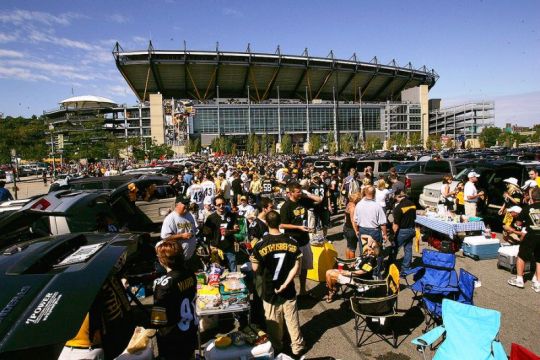
Steelers fans tailgate before a game at Heinz Field. (Photo: Ronald Martinez/Getty Images) If you can’t find the famous Mobile Tailgating Unit — a repurposed Steelers-yellow ambulance (with a bathroom on board!) — then you’ll just have to settle for the rest of the fun around Heinz Field. There are over 20 parking lots, all of which open five hours before kick-off. While many of the closest spaces have been pre-sold to longtime fans, if you get there very early you might still be able to find a spot. Stage AE is the official Steelers Tailgate Zone, but you can find Polish-inspired food and great cooks everywhere. Check out Blue Lots 7F and 7H for some of the best snacks. Just be sure to bring your Terrible Towel and your dancing shoes for the Steelers Polka. 8. Chicago Bears: Plenty of Hours to Fight the Chill
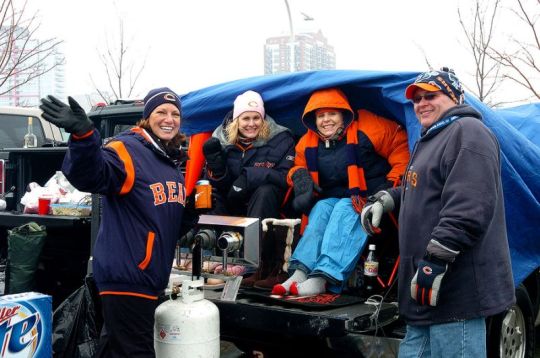
Bears fans tailgate at Soldier Field in Chicago. (Photo: Al Messerschmidt/Getty Images) While you can’t tailgate during the game — maybe you should actually watch some football after all — you can tailgate at Soldier Field for four hours before and two hours after. That’s a lot of time in what can be unforgiving weather, which is why Bears veterans wear layers and prepare for anything. Tailgating is allowed in all surface lots and on the top of Waldron Deck, but you need pre-purchased parking passes. If you don’t have a pass, just bring enough food and beer to share and you’ll find plenty of people willing to let you sit around their grill. Some lots are designated as family-friendly, while others can get particularly rowdy. Just be sure not to miss Fiesta Bob’s pregame speech, which he’s been doing for over 20 years — typically around 10:30 a.m. for a noon game. 7. Green Bay Packers: Getting Back to Your Roots
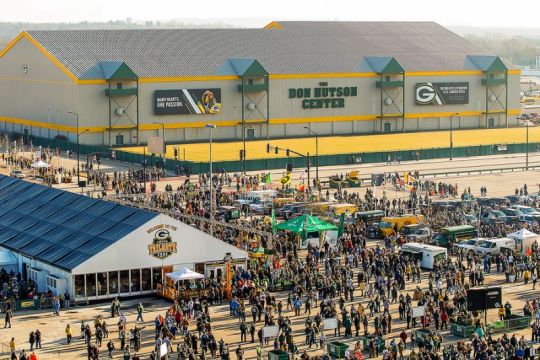
Fans crowd the tailgating area at Lambeau Field. (Photo: Kena Krutsinger/Getty Images) There is some evidence, according to the Packers’ organization, that tailgating was in fact invented by the Green Bay fans in the 1920s as fans gathered around fires to stay warm before games. Sure, the official tailgating zone is called The Tundra — as in a frozen tundra. But you’ll get warm enough once you try all the cheese curds, brats, and beer. The Lambeau Field parking lot opens four hours before game time and no oversized buses or RVs are allowed. It might be hard to find a space, though, since the majority of spots are sold to season parking pass holders, who aren’t giving those spots up anytime soon. You can reserve a spot in one of the other lots nearby. Or, to tailgate without a car, head to the Brett Favre Steakhouse, a few blocks from the stadium, or join the Bart Starr Plaza party. 6. Cleveland Browns: Beer Inside a Chicken? What’ll They Think of Next
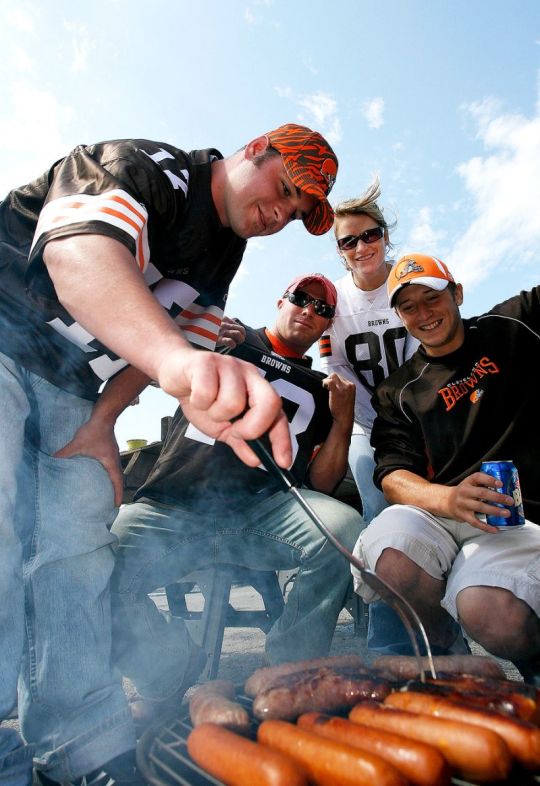
Fans tailgate before a game between the Dallas Cowboys and the Browns in Cleveland. (Photo by Kevin C. Cox/Getty Images) You know any tailgating community that creates the beer-can chicken — a chicken filled with beer and then grilled — is going to have some fun pre-game parties. Fans start gathering as early as 7 a.m., when the main Muni parking lot opens for most of the season’s games. The city recently released rules for this season, which includes no open fire, no alcohol, and no saving spaces, but that doesn’t mean no fun. As you’re enjoying your fried turkey and chili, keep your eyes peeled for the famous Cleveland Brown’s tailgating vehicles like The Kennel, an orange and brown school bus, or the Tailgate Dawg, a bus with a giant dog head on the front. Related: The 15 Best College Bars in America 5. Philadelphia Eagles: Where Tailgating is Serious Fun
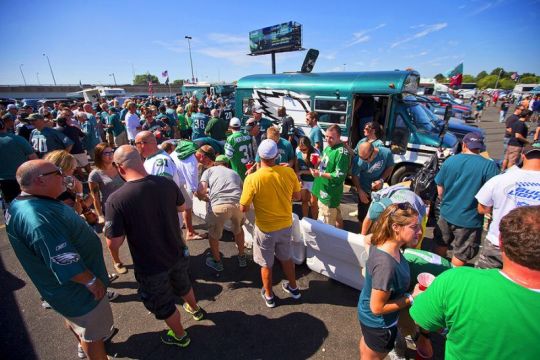
Philadelphia Eagles fans tailgate at Lincoln Financial Field. (Photo: Mitchell Leff/Getty Images) Philadelphia takes its tailgating seriously — so seriously that The Football Shuttle, a repurposed school bus that lives in the Wells Fargo Center parking lot, has its own Facebook page. Tailgaters make official-looking t-shirts and give their groups names. Many have been grilling and playing Shotgun Shotgun, a kind of drinking relay, in the same spot for decades. Much of the best tailgating takes place in the lots around the Wells Fargo Center, across from Lincoln Field, where you can just show up in the morning and pay for your spot at the gate. Parking lots around the stadium open five hours before games, and tailgating is not permitted in Lots Q-W or the lot near the Nova Care Complex. Related: Game on: The Best College Football Towns in America 4. Houston Texans: Bigger and Better in Texas
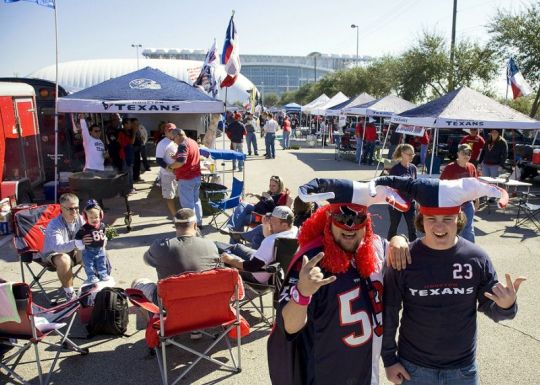
Costumed Houston Texans warm up for a game. (Photo: Richard Carson/Reuters/Corbis) Texas knows BBQ and Houston Texan tailgaters know a thing or two about making some of the best BBQ you’ll find in any NFL stadium. No tailgate at NRG Stadium would be complete without trying some brisket, ribs, or sausage from one of the local pitmasters. To do so, you’ll either need a game ticket or a $10 tailgating guest ticket. A few years ago, tailgating at Texan games got so popular that team officials had to cut down on the crowds. Once you’re inside the parking lots, though, no one does it like the Texans do it. If you want to be named the Tailgater of the Game or of the Year, you’ll face some tough competition. Long-time groups like Texans Liberty Tailgaters and the Raging Bull Tailgaters spend over $10,000 each season to serve up Texan hospitality. 3. Kansas City Chiefs: Bring Bacon and BBQ
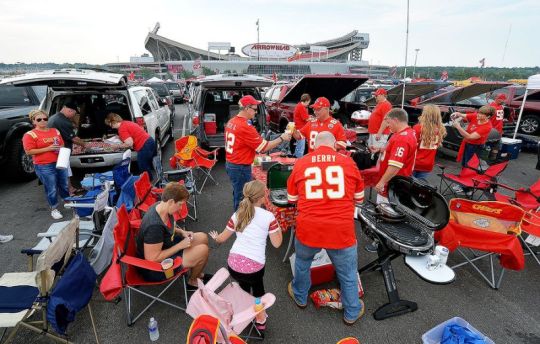
Kansas City Chiefs fans know their barbecue. (Photo: John Sleezer/Kansas City Star/MCT) Tailgating at Arrowhead Stadium is only a little bit about the football. Mostly it’s about the friends you make waiting in line at dawn, the fun of one truly massive party, and BBQ. Really, it’s a lot about the Kansas City-style BBQ. The parking lots, which the Chiefs share with the Royals, are so large that 25,000 cars can park and there’s still plenty of room for BBQ pits, Chiefs-themed postal vans, and almost any food you want wrapped in bacon. That means if you don’t have a group, you should be able to find one amid all the Kansas City friendliness. A tip: bring bacon — good, juicy bacon — and be ready to trade it. The gates open three-and-half hours prior to kick-off, but you’ll want to get there early and make friends in line. 2. Baltimore Ravens: Games, Crabcakes, and Football

Baltimore Ravens fans barbecue in the parking lot of M&T Bank Stadium. (Photo: Kirby Lee/Getty Images) If you’re not sure how to tailgate at a Ravens game, don’t worry. The team has official tailgating tips and even games you could try playing to pass the time, like Cornhole, Ladder Ball, or a “Ray Lewis Entrance” dance-off. The lots around the stadium are typically sold out well in advance to season ticket holders (and serious tailgaters). If you’re looking for a party, try Lots H and G. If you’ve got kids, head to the Ravens Walk, by Lots B and C. That area typically has pre-game entertainment, DJs, and big screen TVs. If you don’t have a pre-purchased parking pass, then you can always park in the lot across the street behind the ABC Party Rental store. Whichever lot you pick, you’re bound to find beer, football fans, and crab cakes. That’s what Baltimore does best. 1. Buffalo Bills: Not Too Cold for the Real Fans
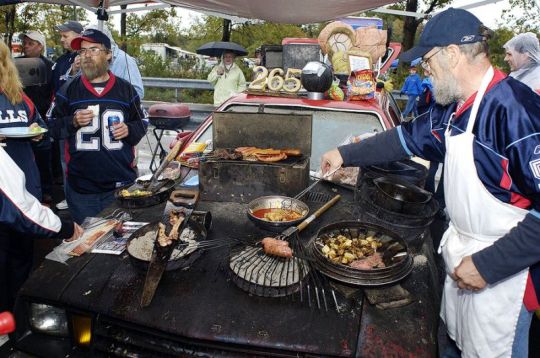
Bills fans cook from the top of a 1989 Ford Pinto. (Photo: AP Photo/Don Heupel) Sure, Bills fans know how to throw a traditional outdoor tailgate, no matter the weather. But they also have the largest indoor tailgating party in the league held at the ADPRO Sports Training Center. That area, with games, prizes, and entertainment, tends to be more family-friendly and kid-focused. If you’re looking for adult fun, you’re going to have to brave the cold. Plenty of long-time fans have been doing just that for years. Look for Ken “Pinto Ron” Johnson, who grills meat on the hood of his Pinto, makes pizza in an oven made of a filing cabinet, and cooks chicken wings in a mailbox. Of course, you’ll also have to take the traditional shots out of a bowling ball, and you won’t want to miss Buffalo wings in the home of Buffalo wings. source Read the full article
0 notes
Photo
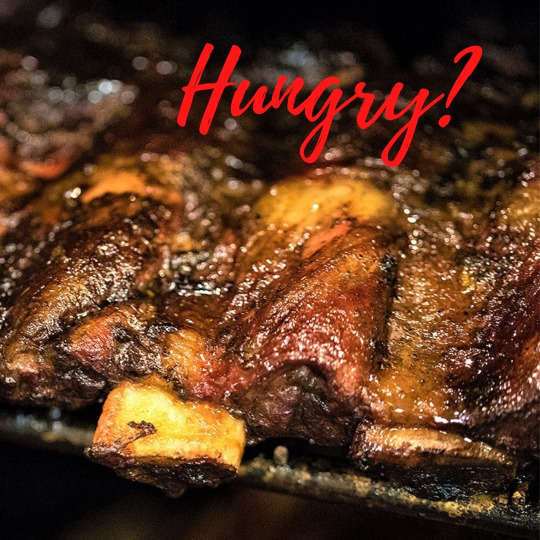
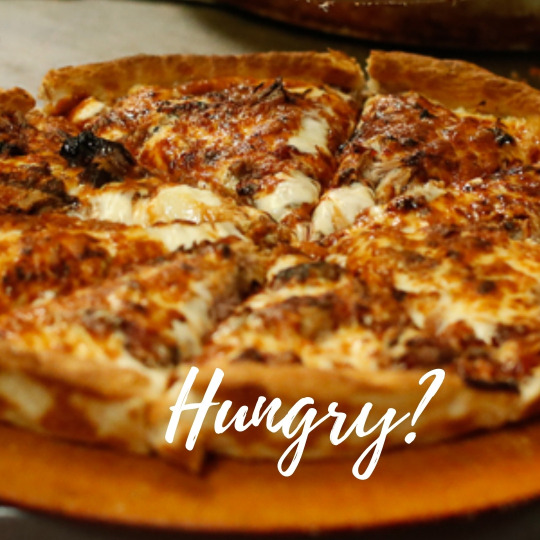
Texas Smokehouse BBQ or Chicago-style deep dish pizza. We have what hungry folks need to fill up! Conveniently one block north of CA-92 at the El Camino Real exit in San Mateo!
650-578-1942
#texas bbq in san mateo#deep dish pizza#bay area deep dish pizza#chicago-style pizza in the Bay Area#Texas smokehouse BBQ in the Bay Area#san mateo pizza restaurant#windy city pizza
2 notes
·
View notes
Text
Whirlwind Weekend in the Windy City

Planning Phase
Late last year, Southwest Airlines offered a great incentive to sign up for their credit card: California residents who charged at least $1000 in 3 months would earn a free companion pass for the year of 2018, in addition to the 40,000 bonus miles normally awarded. We fly on Southwest several times a year, so this is a great deal for us. We wanted to make the most of the promotion, so we decided to plan a long weekend trip for Memorial Day Weekend (MDW). Looking through the list of cities with direct flights from San Jose, we decided Chicago would be the perfect place to visit. I have never been there before, and DH has only been there to run the marathon so he has not done any of the touristy activities. On top of that, we would be traveling in late May, when the weather in Chicago is usually warm. There’s no chance I’d voluntarily visit there during the winter!
Southwest offers 2 direct flights a day from San Jose to Midway. The afternoon flight doesn’t land until 9pm, so that would get us in too late to do any touring on Friday. The earlier flight lands at 12:45pm, leaving us half a day to enjoy the city after checking into our hotel. The one dilemma is that this flight leaves San Jose at 6:30am. That means an extremely early wake up call that morning, but I guess it’s not so bad if we adjust our clocks to Central time zone the night before! Haha
Up next, we needed to find a hotel. We frequently use AirBNB and VRBO for long weekends out of town, but when we have a late evening flight home at the end of the trip, we end up struggling to find a place to store our luggage after checking out in the late morning. In the past, we have rented a car for the day, stored our luggage in the trunk, and spent the day visiting places a little further from the city center before driving ourselves to the airport when it’s time for our flight home. This time, we wanted to spend all of our precious touristy minutes in the city center, so renting a car for the day wouldn’t be very convenient. We decided to book a real hotel for this trip, and then we could leave our luggage at the front desk after checking out on the last morning. That way, we could spend the whole day enjoying the city, and just retrieve our luggage at the end of the day on our way to the airport. Our flight home isn’t until 7:50pm on Monday night, so we really will have a full day to explore Chicago.
We knew it was important to stay at a hotel in the Loop, near public transit and near the touristy things in the city. After a bit of searching online, we decided to stay at Club Quarters Hotel in Central Loop. It is a clean, modern, affordable hotel with good ratings from past guests, and it is located in the heart of downtown Chicago, just a few minutes from several lines on the L train. They also offer free cancellation up to 24 hours prior to arrival, which is always nice reassurance in case anything comes up last minute.
With our flights and hotel all set, it was time to figure out what we wanted to do with our 3 and a half days of touring. Obviously, we wanted to see all of the highlights like Millennium Park and the giant bean, eat Chicago style hot dogs and deep dish pizza, go to a few museums, and DH really wanted to go to a Cubs game if they were in town this weekend. A quick Google search confirmed the last item on that list to be a possibility. Not only are the Cubs scheduled to have several home games over MDW, but they are playing the San Francisco Giants! Being current Bay Area residents, it will be a toss up on which team we should root for at that game! There are games scheduled for Friday afternoon (which we can’t attend because it starts right around when our flight lands), and Saturday and Sunday evening. Originally, DH planned to wait until a week or two before the game to look for cheap seats on Stubhub. One of our friends in California is a big Cubs fan and has season tickets to their games. He was not planning to go to that game in Chicago over MDW and he offered to sell us his tickets, which DH gladly accepted.
It was a little overwhelming trying to narrow down which of the touristy things we should do during our limited time in Chicago. I was looking for ideas on Groupon when I found the City Pass Go Card. You can purchase the pass for 3, 4, or 5 attractions for a discounted rate, and then Groupon had a sale on the pass so it was a really good deal. There is a list of 27 attractions and we can pick whichever ones we want to visit at that time (ie: no need to pre-book attractions for a specific day). This is a great feature because it allows us to be flexible and change the order of our plans in case of rain or whatever. If you by the pass on the Go Card website, it costs $79, $104, and $119 per person for the 3, 4, and 5 attraction passes. Groupon had the 5 attraction pass on sale for $98 per person, meaning it would cost an average of $20 per activity. Looking through the list of 27 attractions, the 5 that we wanted to do all cost between $24 and $45 per person, so it was a no-brainer to buy the pass! They sent me a voucher which is good for up to one year after purchase, and then once I activate the pass, I have 30 days to visit the 5 attractions. I’ll hold off on sharing which attractions we visited until we get to that part of the review… ya know, just to add a little suspense!
While looking online for other ideas of things to do in Chicago, I stumbled upon a website for a free walking tour. We have taken lots of free walking tours both at home in San Francisco and while traveling, and have always had a great experience with knowledgeable and enthusiastic guides. Free Tours By Foot offers a 2 hour “Riverwalk and History Twilight Tour” from 7 to 9pm. Here is the description from their website:
Chicago is the birthplace of the skyscraper and home to one of the world's most recognizable skylines and the northern section of the Chicago Riverwalk is a great place to experience it from the inside - there's no need to take an expensive boat cruise. The buildings form the perfect photogenic backdrop when hearing the great stories of the men and women who built them and who built the city of Chicago. We will show you the birthplace of the city and where a terrible massacre took place. You will hear stories of great fortunes and a great fire as well as the incredible story of how Chicagoans re-engineered the flow of their river. Join Free Tours by Foot as we take a leisurely stroll along the northern reaches of the Chicago River and take in the beautiful architecture, such as the Tribune Building, and learn the stories behind the men and woman who built them. The tour ending point is near Municipal Pier #2 (better known as Navy Pier), where you can easily stroll over to see the sites- including the Ferris wheel. The Pier is filled with delicious Chicago favorites like Garrett's Popcorn, Chicago style hot dogs (NO ketchup allowed), and of course, a Billy Goat Tavern.
I was able to reserve our spots on the Friday evening tour with their website and I received an email confirmation right away. This might be a terrible decision considering how early we are waking up that day and how exhausted we may be by the time this tour starts, but I think we’ll be okay to tough it out. It will be worth it as the tour sounds like a fabulous way to get an overview of the city on our first night in town!
I attempted to research where to find the “best Chicago style deep dish pizza” but ultimately gave up! There are way too many people with different opinions about this topic, and it is impossible to narrow it down to just one or two places that we must try. Somehow, this didn’t really surprise me considering the same would likely happen if I tried to Google the best place for New York style pizza in Manhattan haha I did compile a list of a few options that got glowing reviews (both for pizza and for hot dog restaurants), with locations scattered around the city, and we planned to just play it by ear and pick a restaurant that is close by when we are ready to eat. That wraps up our planning for this whirlwind weekend in the Windy City!
0 notes
Text
Top 10 Affordable, Kid-Friendly Suburbs That City Parents Won’t Hate
James Brey/iStock
It’s said there’s a season for everything—a time to sow and a time to reap, a time to scoop up bargains at after-holiday sales, and a time to purge that extra crap you didn’t need in the first place. And many new parents inevitably face the most transformative season of all—the one when they decide they have no choice but to leave the excitement and cramped quarters of city life and head for the bigger houses and better school systems in the suburbs.
Even if they do it kicking and screaming.
But now that many older millennials, those in their 20s to mid-30s, are finally settling down, the ’burbs are getting a boost. Last year marked the first time this decade that the nation’s suburban population grew faster than the population of cities, according to the Brookings Institute, a Washington, D.C.-based think tank. And as these younger homeowners populate America’s bedroom communities, they’re increasingly opting for places offering up some of the big-city perks they’ve grown to know and love.
So where should family folks go when they’re reluctant to say goodbye to late-night pizza delivery, freedom from needing to buy car insurance, bars that don’t have “TGIF” in their names, or honest-to-God culture? We’ve got you covered. The data team at realtor.com® found the most affordable, family-friendly suburbs outside the nation’s biggest cities that offer plenty of amenities parents will enjoy on their own.
“You’re seeing more millennials moving to the suburbs, especially as they have kids,” says realtor.com’s chief economist, Danielle Hale. “People are definitely looking for affordability, better schools, less crime… [So] more outer suburbs have really put in an effort to develop walkable town centers and other places for people to gather, to enjoy similar benefits they’d find in urban centers.”
In order to come up with our move-here-now list for America’s cool moms and dads, we started by looking at the nation’s 10 largest cities. Then we took all the surrounding ZIP codes outside the city limits to find the best ’burb for each major metro. (We excluded a second Texan city, Houston, so we could squeeze in bellwether city San Francisco, the 11th-largest metro.) We looked at*:
Affordability based on realtor.com data, defined as less than $400K ($500K for pricey SF)
Percentage of children residing in each ZIP code
Availability of child care
Number of toystores
School rankings
Number per capita of restaurants, bars, and museums
Low crime rates
Reasonable commuting time (70 minutes or less)
So get over it: Trading the city for the suburbs doesn’t have to be torture. Just check out our list!
The ’burbs
Claire Widman
1. Edison, NJ
Suburb of: New York City ZIP code: 08817 Median home price in ZIP code: $295,050
Roosevelt Park in Edison
Sujit kumar/Wikipedia CC
Low crime, good schools, and the 217-acre Roosevelt Park make this town of just over 100,000 residents one of the more attractive suburbs in the New York metro area. It also boasts a genius connection. After all, it gets its name from Thomas Edison, who established his world-changing Menlo Park industrial research lab in 1867. Parents can bring their own young scientists to visit the newly renovated—and way interactive—Thomas Edison Center. Seriously, it’s a fascinating place, even on repeat visits.
There’s no shortage of things to do for just about every kind of kid here, from the fun Rebounderz trampoline center (yo, don’t forget those waivers!) to the Triple C Ranch and Nature Center, a wildlife refuge. And for the grownups, there are plenty of bars and restaurants—over 280 of ’em, according to TripAdvisor. Yes, you can go to the Applebee’s here, but you don’t have to.
“When people are ready to make the move from city limits, they come,” says local real estate agent Marc Rizzo of RE/MAX Diamond Realtors. “We always see a big influx of families from New York City. You get more for your money here. In fact, their [mortgage] payments are probably going to be significantly cheaper than what they’re paying for rent in the city.”
2. Seal Beach, CA
Suburb of: Los Angeles ZIP code: 90740 Median home price in ZIP code: $355,050
Seal Beach, CA
Kelly Bourquin/iStock
You thought Southern California was out of reach, pricewise? Check out Seal Beach, the northernmost beach town in Orange County. True, downtown Los Angeles and the Silicon Beach area aren’t really within commuting distance, but the town is just down the road from Long Beach, the second-largest city in the greater L.A. metro area.
There’s a real sense of community and camaraderie in this 25,000-person township, and plenty to do, too, with a quaint/California-cool downtown and enough excellent restaurants to justify the popular Seal Beach Food Tour.
And your home is likely to be a solid investment. The local economy is stable, thanks to the presence of a major Pacific naval installation and a Boeing Co. facility that built rocket parts for NASA’s Apollo moon missions. The adjoining Ports of Los Angeles and Long Beach are the busiest and second-busiest container ports in the nation.
Seal Beach also has some of the highest-rated schools in the nation, according to GreatSchools.org. And did we mention the beaches themselves? Nice. The near-perfect Southern California climate draws families looking to enjoy biking, hiking, surfing, kite-flying, and watching free outdoor movies in the fall at Eisenhower Park. Parents can sign the kiddies up for surf lessons. And hey, why not take one yourself? It’s (almost) never too late.
3. Plainfield, IL
Suburb of: Chicago ZIP code: 60585 Median home price in ZIP code: $369,475
The Smirnoff bottling facility in Plainfield should help ease your transition to the suburbs.
Daniel Acker/Bloomberg via Getty Images
Families looking for a new home with a Main Street USA vibe should look toward Plainfield, about 40 miles southwest of Chicago. The entire downtown has been added to the National Register of Historic Places, for its commitment to various architectural styles of the last century.
“Most of our clients are families who move out to Plainfield for the schools. It’s a nice suburban destination,” says local real estate broker Keith Lang of John Greene Realtor. “We’ve got a really nice selection of newer homes—most built after 2000—and brand-new schools, shopping, and roads.”
The village stands out for its high percentage of child care providers and close proximity to parks, golf courses, and lots of other outdoor recreation. Don’t miss the 839-acre Lake Renwick Preserve, where bald eagles can be spotted, along with nesting herons, egrets, and cormorants.
For those who prefer indoor pursuits, there’s the massively popular Plainfield Lanes. It offers bowling, arcade games, and an escape room that you, um, have to escape from.
4. Keller, TX
Suburb of: Dallas ZIP code: 76244 Median home price in ZIP code: $282,525
Keller, TX
facebook.com/cityofkellergovernment/
This suburban outpost, located between fast-growing Fort Worth and Dallas, describes itself as “the premier community in which to live, work, play, and invest by balancing big-city comforts with small-town charm.” Yeah, they’re laying it on a bit thick, but the description is pretty accurate. The family vibe starts with the region’s unswerving emphasis on education: Twenty of its schools have been recognized by the Texas Education Agency, and 20 major universities are located within an hour of Keller.
The suburb “is a fabulous area for families,” says Denise Kennedy, of Kennedy & Co. Realty. “They really invest in the community to make it a good place to live.”
It’s also significantly cheaper than Dallas, where homes go for a median $420,000 within city limits.
Keller also benefits from its proximity to well-known attractions, including the 212-acre Six Flags Over Texas amusement park and AT&T Stadium, the $1.2 billion home of the Dallas Cowboys. For more highbrow entertainment, it’s just a quick hop to some of the nation’s top museums, including the Amon Carter Museum of American Art in Fort Worth and the Perot Museum of Nature and Science in Dallas.
5. Swedesboro, NJ
Suburb of: Philadelphia ZIP code: 08085 Median home price in ZIP code: $273,500
Old Swedes Inn in Swedesboro, NJ
Jerrye & Roy Klotz/Wikipedia CC
Located about 25 miles southwest of Philadelphia, this tiny town of 2,600 has “a great school system, a vibrant, recently renovated and expanded library, and a downtown business district that is exploding with new restaurants and shops,” according to Swedesboro Mayor Thomas Fromm. Thanks, Mayor Tom!
So what the heck do you actually do here? Eat, for one thing: Swedesboro boasts the area’s best Asian, Italian, and pub restaurants, according to a countywide competition. Parents can rest assured that their young ones are well cared for, since the town is also is to the county’s top day care center, the Goddard School, according to the residents.
Bonus: It’s also home to the family-friendly Bridgeport Speedway, billed as the “fastest dirt track in the East.” Vroom.
6. Chesapeake Beach, MD
Suburb of: Washington, D.C. ZIP code: 20732 Median home price in ZIP code: $349,375
Chesapeake Beach, MD
Danita Delimont/Getty Images
Famed Washington, D.C., suburbs like Falls Church, Arlington, and Alexandria garner lots of attention for their high-powered residents and equally ascendant home prices. But there are other communities that attract capital worker bees in search of a more laid-back lifestyle. Chesapeake Beach, a town of 5,900, was established as a seaside resort in the early 20th century and still maintains much of its early ambience.
The town is home of the Herrington Harbor Marina, routinely voted one of the best marinas on the bay. Combine that with better-than-average schools, affordable homes, and a low crime rate, and the 35-mile drive into Washington seems a lot more palatable.
7. Coral Springs, FL
Suburb of: Miami ZIP code: 33065 Median home price in ZIP code: $376,175
Aerial view of Coral Springs, FL
traiansum/iStock
This master-planned community of 126,300 has long been an attractive destination for families fleeing lousy schools and high crime in inner-city Miami. While a rush-hour drive to the sun-washed metro can take more than hour, there’s no need to make the trip for entertainment options. Coral Springs boasts an arts museum, theater, golf course, and the annual OurTownAmerica arts and entertainment festival, which has been held every March for nearly 40 years.
Appearances are important in Coral Springs. The city is spending roughly $700 million on a downtown revitalization plan. Unlike other Florida municipalities, it keeps a tight rein on commercial development, so much so that it was the first U.S. city to have a McDonald’s that didn’t have the chain’s signature golden arches. Fight the man!
“[It’s] a welcoming place,” says Lynn Pineda, of Keller Williams Realty. “There are so many activities to keep kids active—and happy.”
8. Dacula, GA
Suburb of: Atlanta ZIP code: 30019 Median home price in ZIP code: $312,915
Dacula, GA
theodysseyonline.com
Dacula may only be about 40 miles northeast of Atlanta, but this small town might as well be on the other side of the planet. The town’s centerpiece is a 76-acre city park regularly used by more than more than 2,000 families, boasting a pool, sports fields, playgrounds, and even an outdoor classroom.
It also has the advantage of being close to family activities that don’t require a trek into Hotlanta. It’s less than 10 miles from the Mall of Georgia, the largest shopping center in the Southeast, and a scant 20 miles from Lake Lanier, a 38,000-acre reservoir that draws about 7.5 million visitors annually.
9. North Chelmsford, MA
Suburb of: Boston ZIP code: 01863 Median home price in ZIP code: $294,275
Barely 30 miles northwest of Boston, this village is within an easy drive of some of the most monumental sites in U.S. history. They range from the North Bridge in Concord, site of the first battle in the American Revolution, to Walden Pond, where Henry David Thoreau famously contemplated the meaning of life.
Not all of the Merrimack River Valley village’s attractions are in the past, though—neighboring Lowell is home to more than a dozen seasonal festivals, and Chelmsford itself hosts one of the nation’s better small-town Independence Day celebrations.
Besides history and festivals, families can also enjoy an increasingly diverse dining scene. Restaurants offering tapas and top-notch sushi sit next to more classic New England joints pushing chowdah and lobster rolls. And for the outdoor-minded, the 24.5-mile Bruce Freeman Rail Trail from Lowell to Framingham is a work in progress for runners and cyclists, with the bulk of what’s been completed so far passing through Chelmsford.
10. Walnut Creek, CA
Suburb of: San Francisco ZIP code: 94595 Median home price in ZIP code: $485,025
Walnut Creek, CA
City of Walnut Creek
Walnut Creek may not be as affordable as the other suburbs on our list. But given that it’s barely 25 miles from San Francisco, where the median home price is a whopping $1.3 million, half a mil is a steal. Plus, Walnut Creek boasts good schools, low crime, and a burgeoning foodie scene.
“It has everything that you would be looking for in terms of food and activities that most major cities have, without the hassle of traffic and parking,” says Shauna Springer, a psychologist who has lived in Walnut Creek for 10 years and has two children, ages 4 and 6.
Springer also loves the access to nature. Walnut Creek claims 16 parks and 3,000 acres of undeveloped space. One of them is Heather Farms, a 102-acre park that features a sprawling, all-abilities playground, a lake, and botanical gardens.
“If you’ve got kids, you can get them on their bikes and get them on the Iron Horse [bike] trail, and just go from one park to another park to downtown,” Springer says.
And to groom your little culture vultures, the Lesher Center for the Arts offers kid-friendly theatrical productions like “The Little Mermaid.” Parents might be able to catch big-name speakers like Jill Biden, while the resident theater company, which just turned 50, puts on an array of new and classic plays. The city even has its own ballet and symphony.
*Data sources: realtor.com, Census Bureau, 2011-16 American Community Survey, Statistics of U.S. Businesses, Greatschools.org, FBI Uniform Crime Report, Google Maps.
The post Top 10 Affordable, Kid-Friendly Suburbs That City Parents Won’t Hate appeared first on Real Estate News & Insights | realtor.com®.
from DIYS http://ift.tt/2G473ln
0 notes
Text
Top 10 Affordable, Kid-Friendly Suburbs That City Parents Won’t Hate
James Brey/iStock
It’s said there’s a season for everything—a time to sow and a time to reap, a time to scoop up bargains at after-holiday sales, and a time to purge that extra crap you didn’t need in the first place. And many new parents inevitably face the most transformative season of all—the one when they decide they have no choice but to leave the excitement and cramped quarters of city life and head for the bigger houses and better school systems in the suburbs.
Even if they do it kicking and screaming.
But now that many older millennials, those in their 20s to mid-30s, are finally settling down, the ’burbs are getting a boost. Last year marked the first time this decade that the nation’s suburban population grew faster than the population of cities, according to the Brookings Institute, a Washington, D.C.-based think tank. And as these younger homeowners populate America’s bedroom communities, they’re increasingly opting for places offering up some of the big-city perks they’ve grown to know and love.
So where should family folks go when they’re reluctant to say goodbye to late-night pizza delivery, freedom from needing to buy car insurance, bars that don’t have “TGIF” in their names, or honest-to-God culture? We’ve got you covered. The data team at realtor.com® found the most affordable, family-friendly suburbs outside the nation’s biggest cities that offer plenty of amenities parents will enjoy on their own.
“You’re seeing more millennials moving to the suburbs, especially as they have kids,” says realtor.com’s chief economist, Danielle Hale. “People are definitely looking for affordability, better schools, less crime… [So] more outer suburbs have really put in an effort to develop walkable town centers and other places for people to gather, to enjoy similar benefits they’d find in urban centers.”
In order to come up with our move-here-now list for America’s cool moms and dads, we started by looking at the nation’s 10 largest cities. Then we took all the surrounding ZIP codes outside the city limits to find the best ’burb for each major metro. (We excluded a second Texan city, Houston, so we could squeeze in bellwether city San Francisco, the 11th-largest metro.) We looked at*:
Affordability based on realtor.com data, defined as less than $400K ($500K for pricey SF)
Percentage of children residing in each ZIP code
Availability of child care
Number of toystores
School rankings
Number per capita of restaurants, bars, and museums
Low crime rates
Reasonable commuting time (70 minutes or less)
So get over it: Trading the city for the suburbs doesn’t have to be torture. Just check out our list!
The ’burbs
Claire Widman
1. Edison, NJ
Suburb of: New York City ZIP code: 08817 Median home price in ZIP code: $295,050
Roosevelt Park in Edison
Sujit kumar/Wikipedia CC
Low crime, good schools, and the 217-acre Roosevelt Park make this town of just over 100,000 residents one of the more attractive suburbs in the New York metro area. It also boasts a genius connection. After all, it gets its name from Thomas Edison, who established his world-changing Menlo Park industrial research lab in 1867. Parents can bring their own young scientists to visit the newly renovated—and way interactive—Thomas Edison Center. Seriously, it’s a fascinating place, even on repeat visits.
There’s no shortage of things to do for just about every kind of kid here, from the fun Rebounderz trampoline center (yo, don’t forget those waivers!) to the Triple C Ranch and Nature Center, a wildlife refuge. And for the grownups, there are plenty of bars and restaurants—over 280 of ’em, according to TripAdvisor. Yes, you can go to the Applebee’s here, but you don’t have to.
“When people are ready to make the move from city limits, they come,” says local real estate agent Marc Rizzo of RE/MAX Diamond Realtors. “We always see a big influx of families from New York City. You get more for your money here. In fact, their [mortgage] payments are probably going to be significantly cheaper than what they’re paying for rent in the city.”
2. Seal Beach, CA
Suburb of: Los Angeles ZIP code: 90740 Median home price in ZIP code: $355,050
Seal Beach, CA
Kelly Bourquin/iStock
You thought Southern California was out of reach, pricewise? Check out Seal Beach, the northernmost beach town in Orange County. True, downtown Los Angeles and the Silicon Beach area aren’t really within commuting distance, but the town is just down the road from Long Beach, the second-largest city in the greater L.A. metro area.
There’s a real sense of community and camaraderie in this 25,000-person township, and plenty to do, too, with a quaint/California-cool downtown and enough excellent restaurants to justify the popular Seal Beach Food Tour.
And your home is likely to be a solid investment. The local economy is stable, thanks to the presence of a major Pacific naval installation and a Boeing Co. facility that built rocket parts for NASA’s Apollo moon missions. The adjoining Ports of Los Angeles and Long Beach are the busiest and second-busiest container ports in the nation.
Seal Beach also has some of the highest-rated schools in the nation, according to GreatSchools.org. And did we mention the beaches themselves? Nice. The near-perfect Southern California climate draws families looking to enjoy biking, hiking, surfing, kite-flying, and watching free outdoor movies in the fall at Eisenhower Park. Parents can sign the kiddies up for surf lessons. And hey, why not take one yourself? It’s (almost) never too late.
3. Plainfield, IL
Suburb of: Chicago ZIP code: 60585 Median home price in ZIP code: $369,475
The Smirnoff bottling facility in Plainfield should help ease your transition to the suburbs.
Daniel Acker/Bloomberg via Getty Images
Families looking for a new home with a Main Street USA vibe should look toward Plainfield, about 40 miles southwest of Chicago. The entire downtown has been added to the National Register of Historic Places, for its commitment to various architectural styles of the last century.
“Most of our clients are families who move out to Plainfield for the schools. It’s a nice suburban destination,” says local real estate broker Keith Lang of John Greene Realtor. “We’ve got a really nice selection of newer homes—most built after 2000—and brand-new schools, shopping, and roads.”
The village stands out for its high percentage of child care providers and close proximity to parks, golf courses, and lots of other outdoor recreation. Don’t miss the 839-acre Lake Renwick Preserve, where bald eagles can be spotted, along with nesting herons, egrets, and cormorants.
For those who prefer indoor pursuits, there’s the massively popular Plainfield Lanes. It offers bowling, arcade games, and an escape room that you, um, have to escape from.
4. Keller, TX
Suburb of: Dallas ZIP code: 76244 Median home price in ZIP code: $282,525
Keller, TX
facebook.com/cityofkellergovernment/
This suburban outpost, located between fast-growing Fort Worth and Dallas, describes itself as “the premier community in which to live, work, play, and invest by balancing big-city comforts with small-town charm.” Yeah, they’re laying it on a bit thick, but the description is pretty accurate. The family vibe starts with the region’s unswerving emphasis on education: Twenty of its schools have been recognized by the Texas Education Agency, and 20 major universities are located within an hour of Keller.
The suburb “is a fabulous area for families,” says Denise Kennedy, of Kennedy & Co. Realty. “They really invest in the community to make it a good place to live.”
It’s also significantly cheaper than Dallas, where homes go for a median $420,000 within city limits.
Keller also benefits from its proximity to well-known attractions, including the 212-acre Six Flags Over Texas amusement park and AT&T Stadium, the $1.2 billion home of the Dallas Cowboys. For more highbrow entertainment, it’s just a quick hop to some of the nation’s top museums, including the Amon Carter Museum of American Art in Fort Worth and the Perot Museum of Nature and Science in Dallas.
5. Swedesboro, NJ
Suburb of: Philadelphia ZIP code: 08085 Median home price in ZIP code: $273,500
Old Swedes Inn in Swedesboro, NJ
Jerrye & Roy Klotz/Wikipedia CC
Located about 25 miles southwest of Philadelphia, this tiny town of 2,600 has “a great school system, a vibrant, recently renovated and expanded library, and a downtown business district that is exploding with new restaurants and shops,” according to Swedesboro Mayor Thomas Fromm. Thanks, Mayor Tom!
So what the heck do you actually do here? Eat, for one thing: Swedesboro boasts the area’s best Asian, Italian, and pub restaurants, according to a countywide competition. Parents can rest assured that their young ones are well cared for, since the town is also is to the county’s top day care center, the Goddard School, according to the residents.
Bonus: It’s also home to the family-friendly Bridgeport Speedway, billed as the “fastest dirt track in the East.” Vroom.
6. Chesapeake Beach, MD
Suburb of: Washington, D.C. ZIP code: 20732 Median home price in ZIP code: $349,375
Chesapeake Beach, MD
Danita Delimont/Getty Images
Famed Washington, D.C., suburbs like Falls Church, Arlington, and Alexandria garner lots of attention for their high-powered residents and equally ascendant home prices. But there are other communities that attract capital worker bees in search of a more laid-back lifestyle. Chesapeake Beach, a town of 5,900, was established as a seaside resort in the early 20th century and still maintains much of its early ambience.
The town is home of the Herrington Harbor Marina, routinely voted one of the best marinas on the bay. Combine that with better-than-average schools, affordable homes, and a low crime rate, and the 35-mile drive into Washington seems a lot more palatable.
7. Coral Springs, FL
Suburb of: Miami ZIP code: 33065 Median home price in ZIP code: $376,175
Aerial view of Coral Springs, FL
traiansum/iStock
This master-planned community of 126,300 has long been an attractive destination for families fleeing lousy schools and high crime in inner-city Miami. While a rush-hour drive to the sun-washed metro can take more than hour, there’s no need to make the trip for entertainment options. Coral Springs boasts an arts museum, theater, golf course, and the annual OurTownAmerica arts and entertainment festival, which has been held every March for nearly 40 years.
Appearances are important in Coral Springs. The city is spending roughly $700 million on a downtown revitalization plan. Unlike other Florida municipalities, it keeps a tight rein on commercial development, so much so that it was the first U.S. city to have a McDonald’s that didn’t have the chain’s signature golden arches. Fight the man!
“[It’s] a welcoming place,” says Lynn Pineda, of Keller Williams Realty. “There are so many activities to keep kids active—and happy.”
8. Dacula, GA
Suburb of: Atlanta ZIP code: 30019 Median home price in ZIP code: $312,915
Dacula, GA
theodysseyonline.com
Dacula may only be about 40 miles northeast of Atlanta, but this small town might as well be on the other side of the planet. The town’s centerpiece is a 76-acre city park regularly used by more than more than 2,000 families, boasting a pool, sports fields, playgrounds, and even an outdoor classroom.
It also has the advantage of being close to family activities that don’t require a trek into Hotlanta. It’s less than 10 miles from the Mall of Georgia, the largest shopping center in the Southeast, and a scant 20 miles from Lake Lanier, a 38,000-acre reservoir that draws about 7.5 million visitors annually.
9. North Chelmsford, MA
Suburb of: Boston ZIP code: 01863 Median home price in ZIP code: $294,275
Barely 30 miles northwest of Boston, this village is within an easy drive of some of the most monumental sites in U.S. history. They range from the North Bridge in Concord, site of the first battle in the American Revolution, to Walden Pond, where Henry David Thoreau famously contemplated the meaning of life.
Not all of the Merrimack River Valley village’s attractions are in the past, though—neighboring Lowell is home to more than a dozen seasonal festivals, and Chelmsford itself hosts one of the nation’s better small-town Independence Day celebrations.
Besides history and festivals, families can also enjoy an increasingly diverse dining scene. Restaurants offering tapas and top-notch sushi sit next to more classic New England joints pushing chowdah and lobster rolls. And for the outdoor-minded, the 24.5-mile Bruce Freeman Rail Trail from Lowell to Framingham is a work in progress for runners and cyclists, with the bulk of what’s been completed so far passing through Chelmsford.
10. Walnut Creek, CA
Suburb of: San Francisco ZIP code: 94595 Median home price in ZIP code: $485,025
Walnut Creek, CA
City of Walnut Creek
Walnut Creek may not be as affordable as the other suburbs on our list. But given that it’s barely 25 miles from San Francisco, where the median home price is a whopping $1.3 million, half a mil is a steal. Plus, Walnut Creek boasts good schools, low crime, and a burgeoning foodie scene.
“It has everything that you would be looking for in terms of food and activities that most major cities have, without the hassle of traffic and parking,” says Shauna Springer, a psychologist who has lived in Walnut Creek for 10 years and has two children, ages 4 and 6.
Springer also loves the access to nature. Walnut Creek claims 16 parks and 3,000 acres of undeveloped space. One of them is Heather Farms, a 102-acre park that features a sprawling, all-abilities playground, a lake, and botanical gardens.
“If you’ve got kids, you can get them on their bikes and get them on the Iron Horse [bike] trail, and just go from one park to another park to downtown,” Springer says.
And to groom your little culture vultures, the Lesher Center for the Arts offers kid-friendly theatrical productions like “The Little Mermaid.” Parents might be able to catch big-name speakers like Jill Biden, while the resident theater company, which just turned 50, puts on an array of new and classic plays. The city even has its own ballet and symphony.
*Data sources: realtor.com, Census Bureau, 2011-16 American Community Survey, Statistics of U.S. Businesses, Greatschools.org, FBI Uniform Crime Report, Google Maps.
The post Top 10 Affordable, Kid-Friendly Suburbs That City Parents Won’t Hate appeared first on Real Estate News & Insights | realtor.com®.
from DIYS http://ift.tt/2G473ln
0 notes